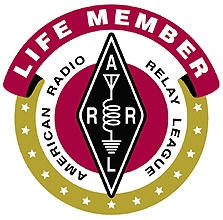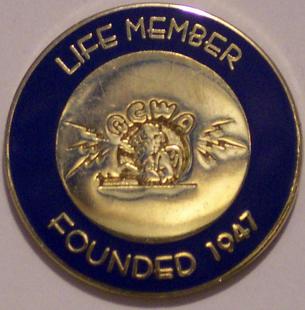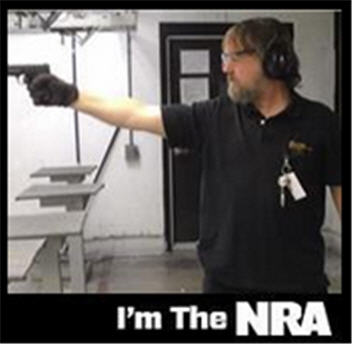|
MY AMATEUR RADIO STORY - Richard Linwood w0ui
Contact WOODY for questions or comments about this page via email.
WØUI "Woody" SKCC=20014
AFMARS AFA8RL
at www.rlinwood.com
QSL OK via direct or via Bureau
The QTH (Grid=DM79pj) is 2133-meters 7000-feet above sea-level
Woody is a Retired "Senior Software Engineer" from the Telephone Company
(Bell System/Mountain Bell - AT&T - Lucent - Avaya - Linux - Windows - Call Contact Center applications)
Below: "Woody" WØUI
 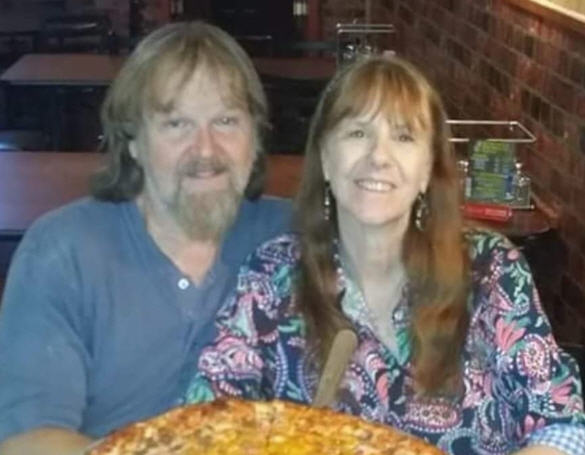
CLICK ON A PICTURE TO ENLARGE IT FOR A CLOSER VIEW
1963
(Pre-SWL - Age 8 - Using my home-made code key) |
2020
(Age 65 with 54 years in amateur radio) |
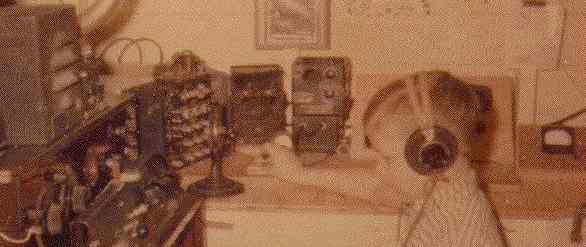
Above: Although I wasn't yet a licensed ham operator,
I did enjoy pretending.
Using a homemade Morse code key that I had built from scrap,
I learned the code in preparation for taking my amateur radio exam someday.
This I did do when I finally became a licensed ham at age 11. |
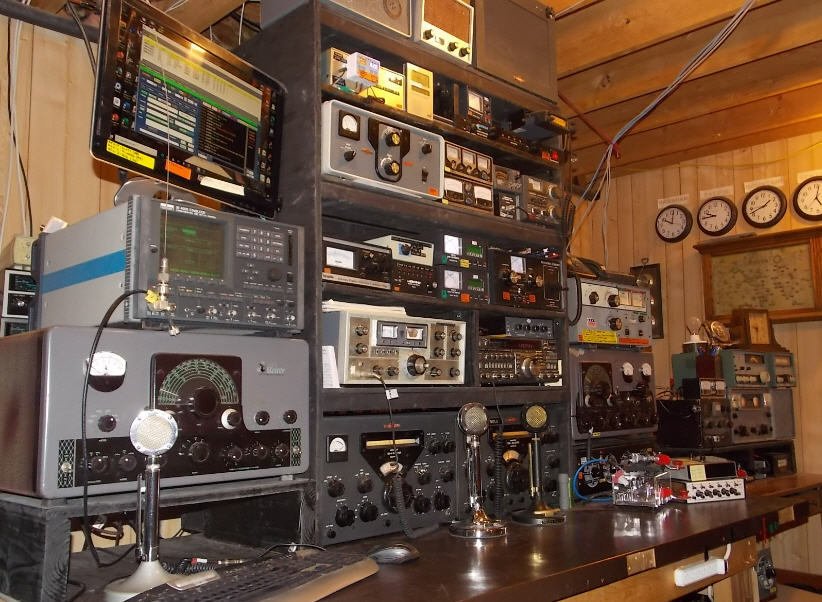
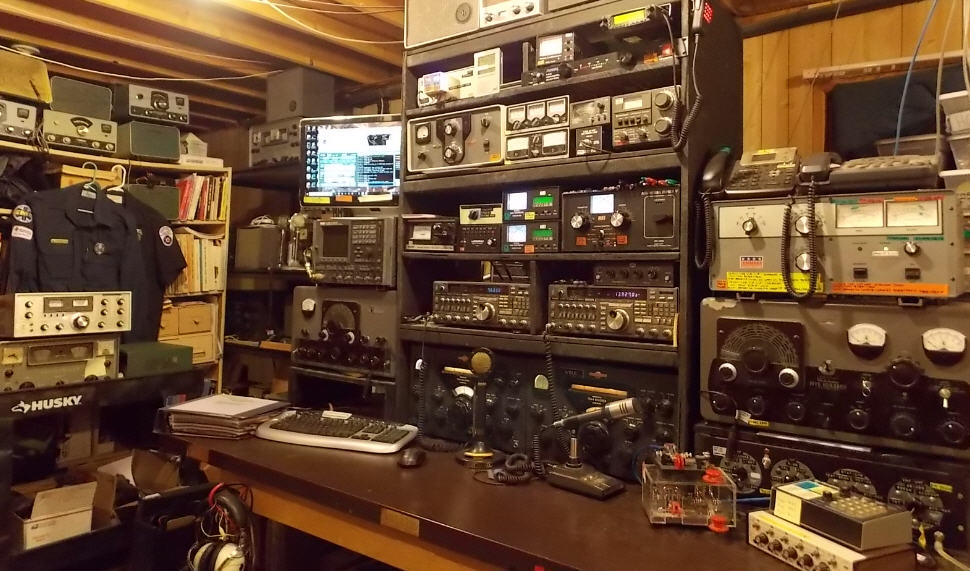 |
1966
BELOW: Using Morse Code as a new ham
calling my first CQ at age 11
It was a dark, blustery cold, snowy December night in my hometown of Jackson, Michigan.
Using the EF JOHNSON ADVENTURER transmitter and my 3.712 mHz crystal,
the Allied Knight-Kit Star Roamer receiver
out to a dipole made of 300-ohm TV antenna wire cut for 80-meters.
In the background, my grandfather's clock
all sitting on a table made by my father in 1937 in his wood shop class while a student at Ann Arbor High School. |
Above - 2020 (scroll to bottom for other current photos)
Very top shelf
Speakers: Hammarlund S-200 speaker (to left
Collins 75a4 receiver), Yaesu SP-401p speaker-patch, Collins 312a1
speaker, Not seen: Yaesu SP-102p for FT767gxii transceiver
Top center shelf:
Vectronics DL-2500 (Modified 2500-watt dry dummy load),
Furman PL-Plus Series 2 Power Conditioner,
(2018)
MFJ-267 dummy load/meter,
(2015)
Yaesu FT-8900r VHF/UHF transceiver
Upper Middle center shelf:
(1968)COLLINS 30L-1 HF linear amplifier,
(1976)
Micronta (Radio Shack) 21-522 Three-Range SWR Meter,
(1976)
Micronta (Radio Shack) 21-520a Three-Range SWR Meter, (2012)
Yaesu YS-500 VHF-UHF SWR Meter
For attic-mounted MFJ-17759 80-40-meter trap dipole:
(2016)
MFJ-264
dry dummy load and Kenwood AT-230 antenna tuner
Lower Middle center shelf:
Control for HAM-IV rotator, Switch to assign Morse code key connections from the MFJ-486 Grandmaster II keyer
over to one of the older tube transmitters,
RCL-10L remote (outdoor) antenna selector switch control,
(2014)
MFJ-828 HF SWR meter (upper=Rig output into amplifiers)
(2019)
MFJ-828 HF SWR meter (RF output from MFJ-989d tuner)
(2014)
MFJ-989D antenna tuner (for outdoor antenna arrays)
Lower Center: L-R:
(1975) Yaesu FT-401b HF transceiver,
Atop FT767gxii = (2001)
Ameco PT-3 RF preamplifier (10/01)
(1986) Yaesu FT-767gxii
HF, VHF, UHF transceiver (02/86)
Lower: Left-to-Right:
(1995)
Schlumberger-Wavtek SI-4031 Stabilock communication service
monitor radio test set,
(1957) Johnson Viking Valiant HF transmitter
(1955) COLLINS 75a4 (left - SN: 1610 12/55 paired w/ Viking Valiant),
(1958) COLLINS 75a4 (right - SN:4623 02/58 paired w/ Viking 500),
(1958) Johnson Viking 500 HF transmitter
(1992) Command Technologies "Commander HF-2500" HF linear
amp
IP Phone used for AF-MARS operations, standard telephone
Left-to-Right on the desk itself: :
Astatic D-104 conventional microphone (wired for
Johnson XMTRs),
Astatic D-104 "Silver Eagle" microphone (wired for Yaesu
FT-401b),
Astatic D-104 "Night Eagle" microphone (wired for Yaesu
FT-767gxii)
Brown Brothers CTL-B double-key connected to the
AEA Morse Machine MM-3 Electronic Keyer which is connected to the FT-767gx transceiver
Vibroplex double-key connected to the MFJ-486 Grandmaster II electronic keyer connected to the vintage tube equipment
B&W Rotary Switches for Antenna, Dummy Load and Rig choices |
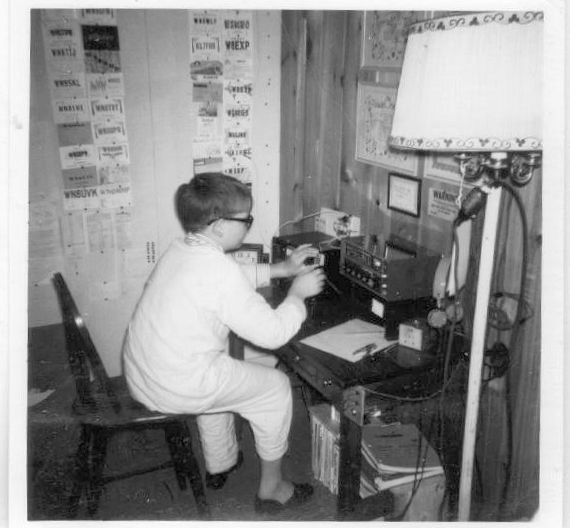 |
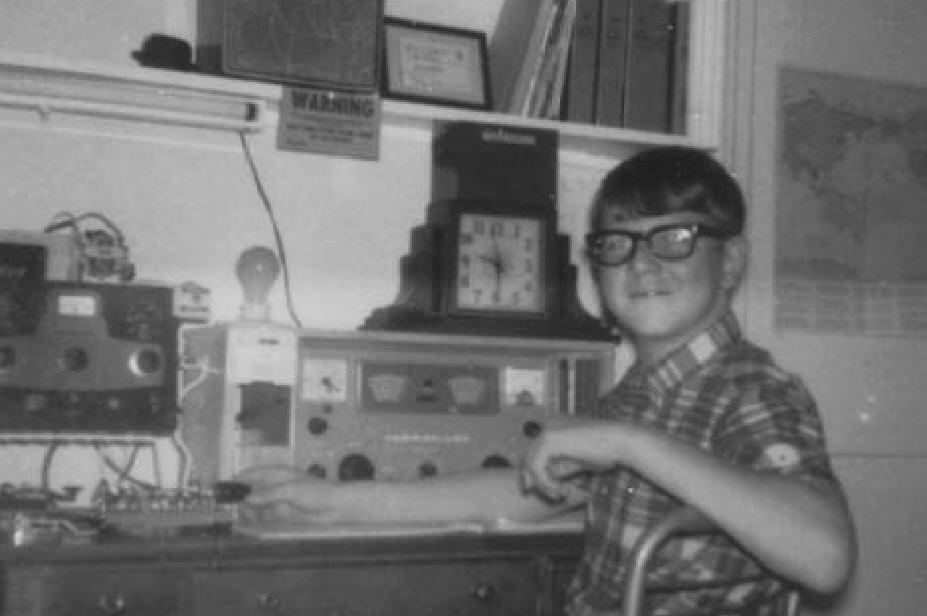 |
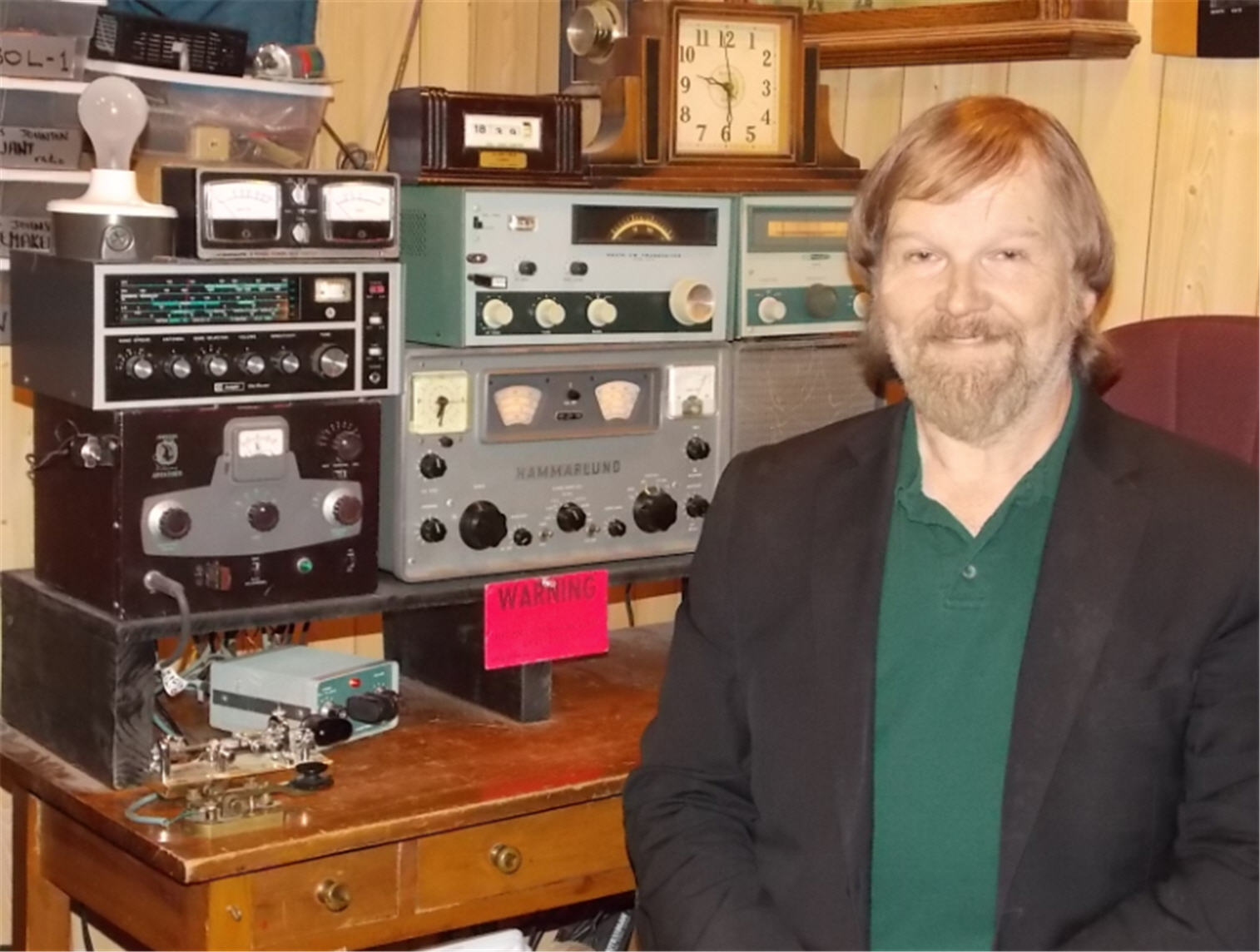 |
Above - Summer 1967 - At age 12
All Morse code!
(1958) EF JOHNSON ADVENTURER HF transmitter
A 60-watt lightbulb as a dummy load for pre-tuning the transmitter,
(1962) HAMMARLUND HQ-110c receiver with S-100 Speaker
My mother's father's Signal Electric brass straight key that
I still use to this day.
The clock was a gift to my father's father in 1932 and
I still use it to this day.
My first bug from 1966 (Vibroplex Blue Racer) bought $15 from Tony Lameika (WA8GQY, sk)
My father, Ralph, had made this desk in his woodshop class while attending Ann Arbor (Michigan) High School in 1937.
He had "donated" it for my shortwave listening (SWL) in 1963
and has had continual use throughout my amateur radio career to this day.
I used the light bulb (and a small neon bulb that you can't see in this picture) as a dummy load when pre-tuning my transmitter and/or doing other work.
I still have a light bulb dummy load in my system. |
2015 - age 60 49 years a ham
49-years later from age 11 to now age 65
Above right: My 1966-1967 ham shack
much as it appears today.
Still all Morse code even to this day at this console
(See additional photos below)
Left-to-Right
Top-Row:
Home-Made incandescent 100-watt light-bulb
dummy load
(1976)
Micronta (Radio Shack) 21-520a Three-Range SWR Meter,
(1965) Pennwood Numecron Tymeter 24-hour (early technology) "digital" clock with the optional 10-minute Call-ID timer.
(1932) My father's father's, Arthur, signed and dated his new clock when he was 44-years old, in June 1932 - almost nine decades ago. He had received it as a gift from a local gas station for being a loyal customer
Left-to-Right
Upper-Row:
(1965) Allied Knight-Kit Star Roamer receiver
(1974) Heathkit
HW-16a Three Band CW transceiver with Heathkit HG-10b VFO
SIDEBAR: I also have a one-off HW16
that has an "a" suffix..
I have Never seen any advertisement for nor literature about an
HW-16a. Anyone else see one of these?
Left-to-Right Main-Row:
(1958) EF JOHNSON ADVENTURER HF transmitter
(1962) HAMMARLUND HQ-110creceiver
with S-100 Speaker
Left-to-Right
Desk-Level:
My mother's father's, Ken, (KIA WW2) 1930's Signal Electric lacquered brass
Model R-63 hand key and my
(1956) Vibroplex Blue Racer bug.
(1970s) Heathkit HD-1410 automatic keyer was a gift from my wife years ago.
My father, Ralph, had made this desk in his woodshop class while attending Ann Arbor (Michigan) High School in 1937.
He had "donated" it for my shortwave listening (SWL) in 1963
and has had continual use throughout my amateur radio career to this day.
Below:
Winter 2020-2021 - age 66 55 years a ham
My early-years ham shack
that I still use to this day.
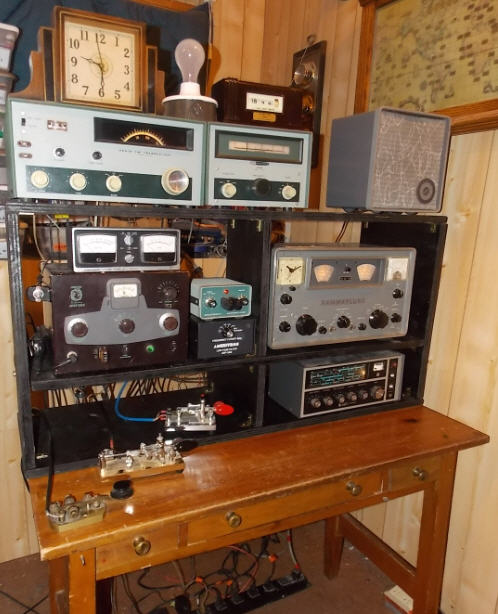
|
ANTENNA ARRAYS AT WØUI
CLICK ON A PICTURE TO ENLARGE IT FOR A CLOSER VIEW
TENNADYNE T-10 14-30 MHz Log Periodic Antenna (LPA)
This is the second Tennadyne LP I have owned.
Installed in 1997 I had used it for both Army MARS work and standard hamming.
It has been a terrific antenna. I can wholeheartedly recommend the Tennadyne products.
(The first, a T-5 14-30 MHz LP, was installed in 1985 and finally retired to another ham in 2006. I had used it for Army MARS work) |
MOSLEY PRO-67-C-3 Yagi covering 40, 30, 20, 17, 15, 12, and 10 meter bands.
I am hoping to see this installed on the tower during the summer of
2021.
It is presently about 80% completed and is down in the barn awaiting
its turn in the To-Do Queue. |
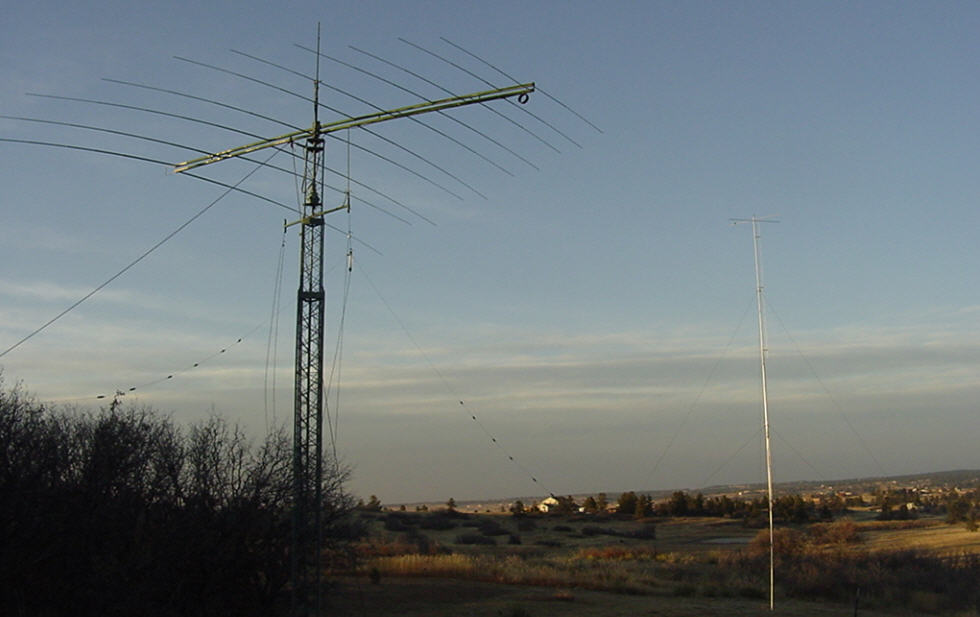
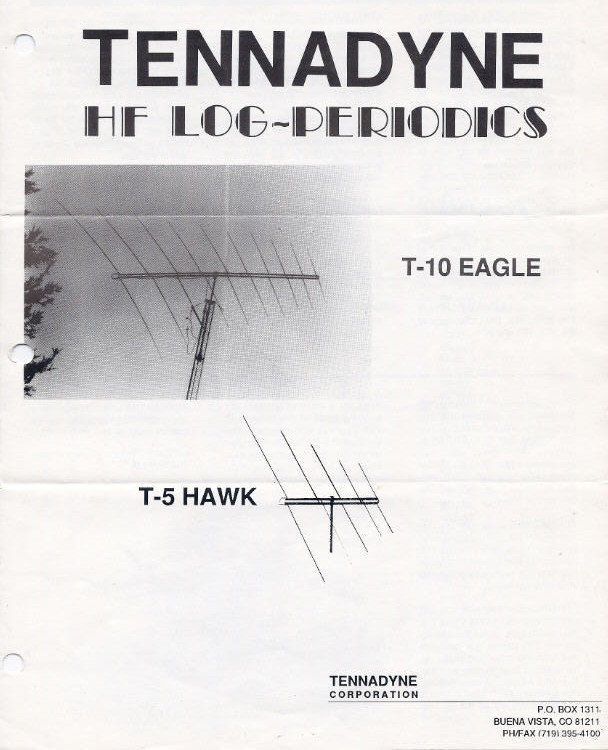 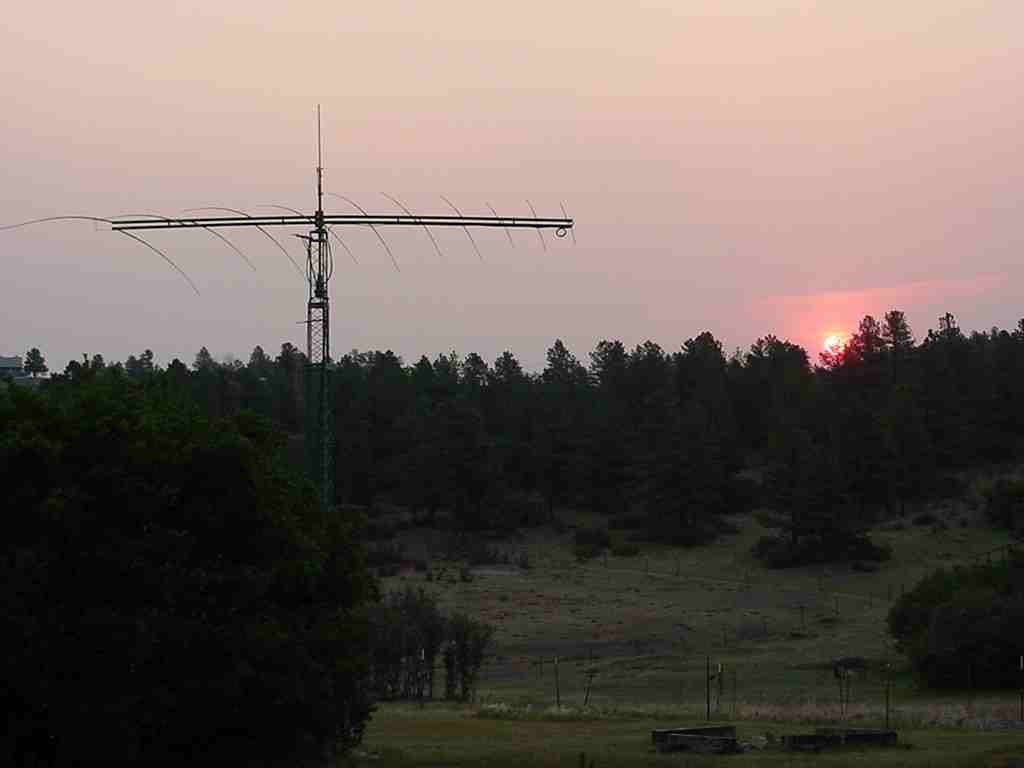
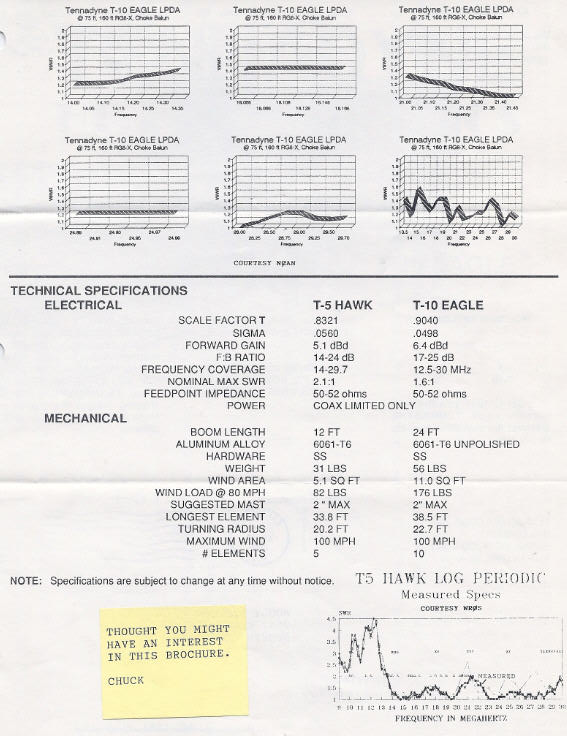 |
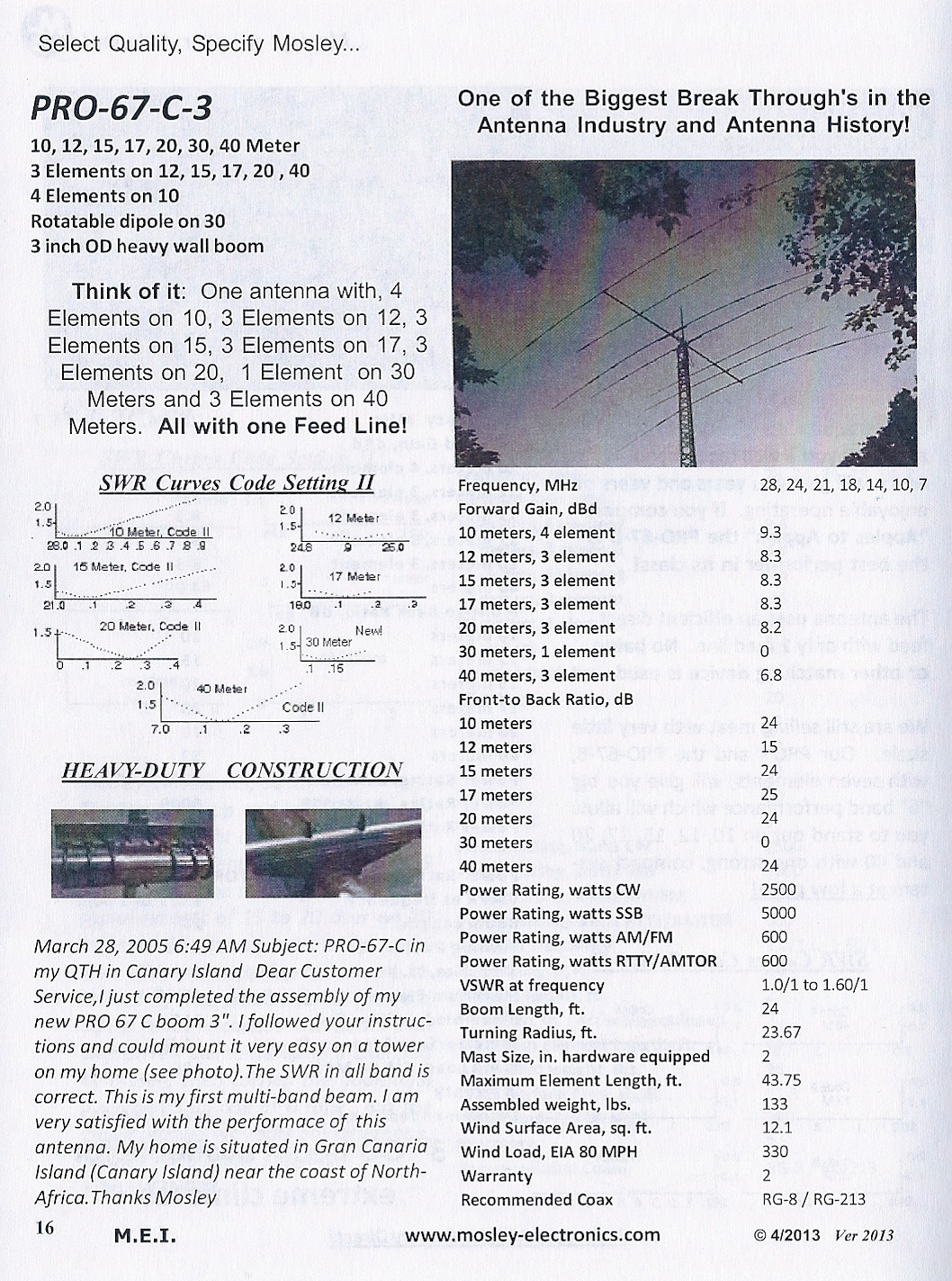
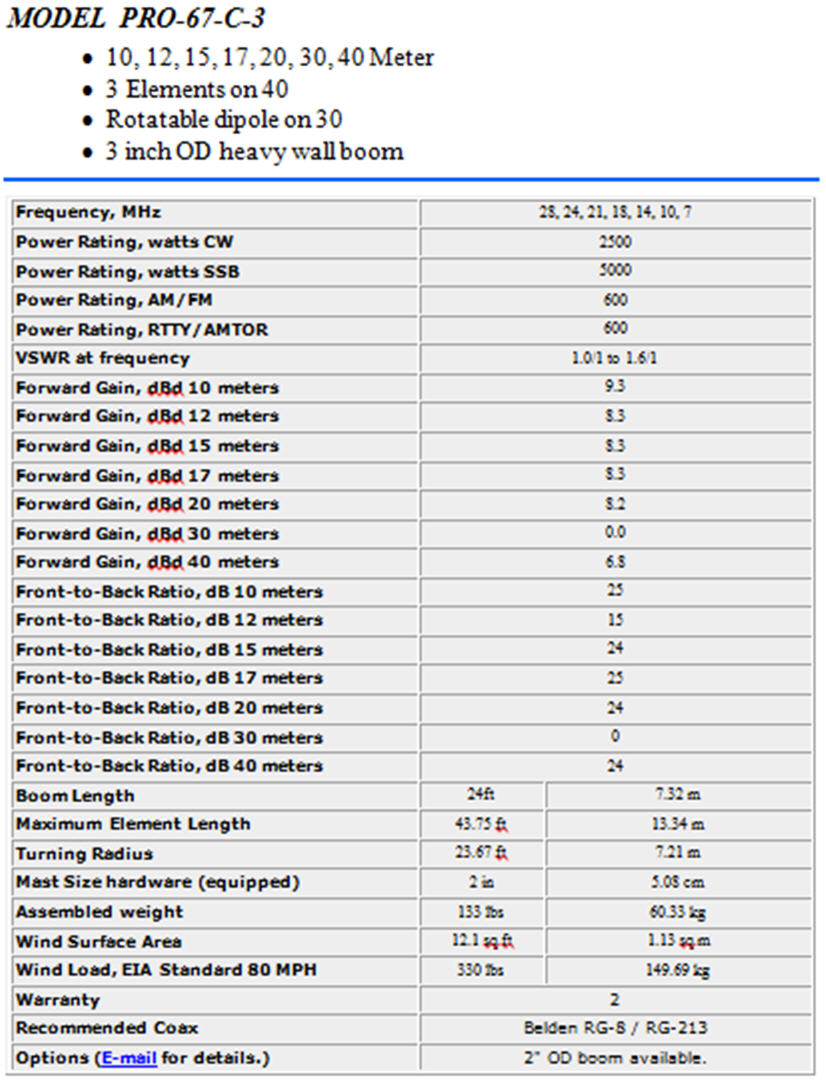
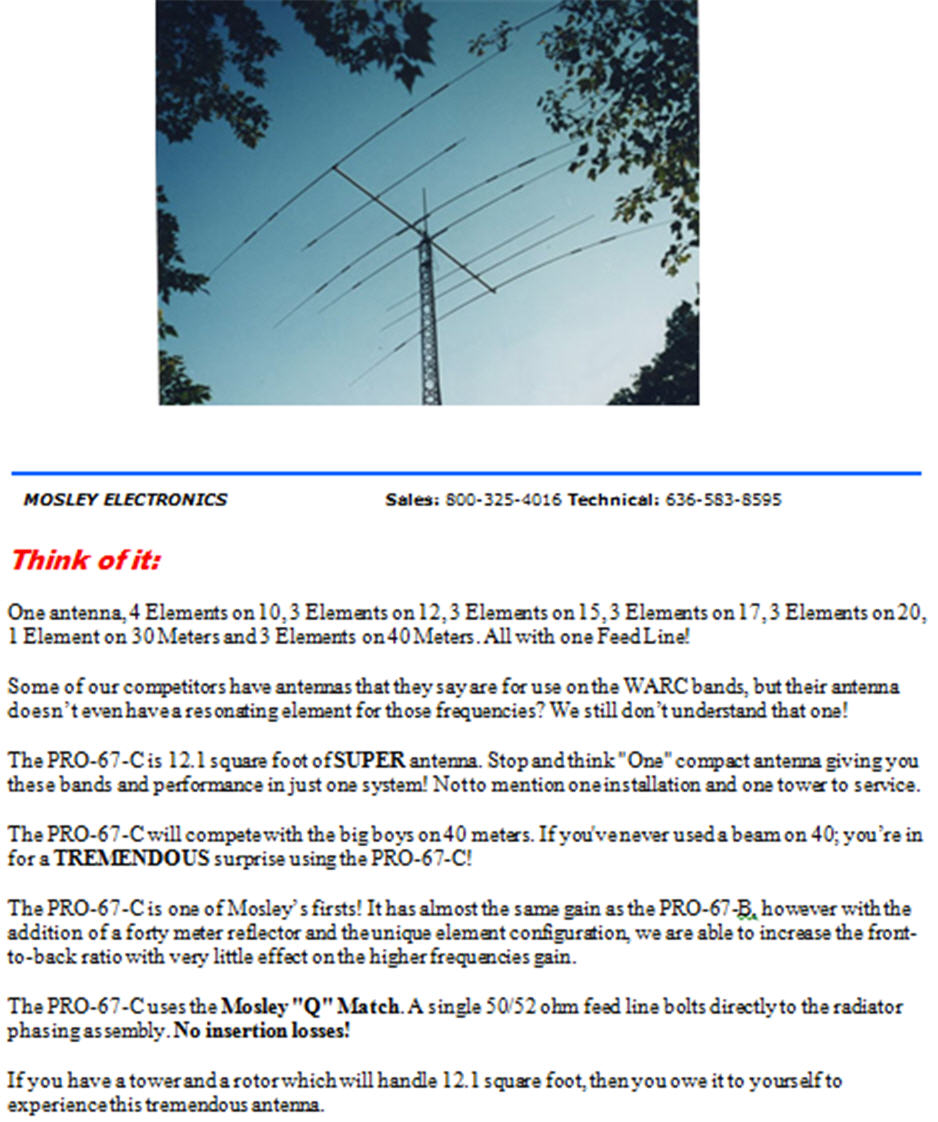 |

MONO-BAND "DOUBLE-BAZOOKA" DIPOLES
for 80, 60, 40, and 30 meters |
DUAL-BAND ANTENNAS
80-40 MFJ-17759 Trap Dipole
60-30 MFJ-2013 Off Center Fed Dipole |
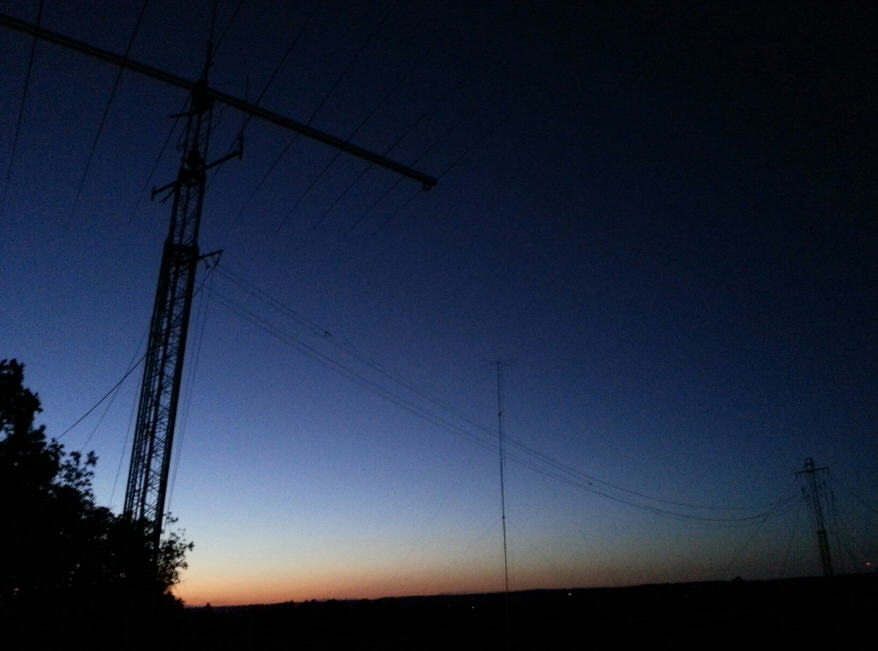 |
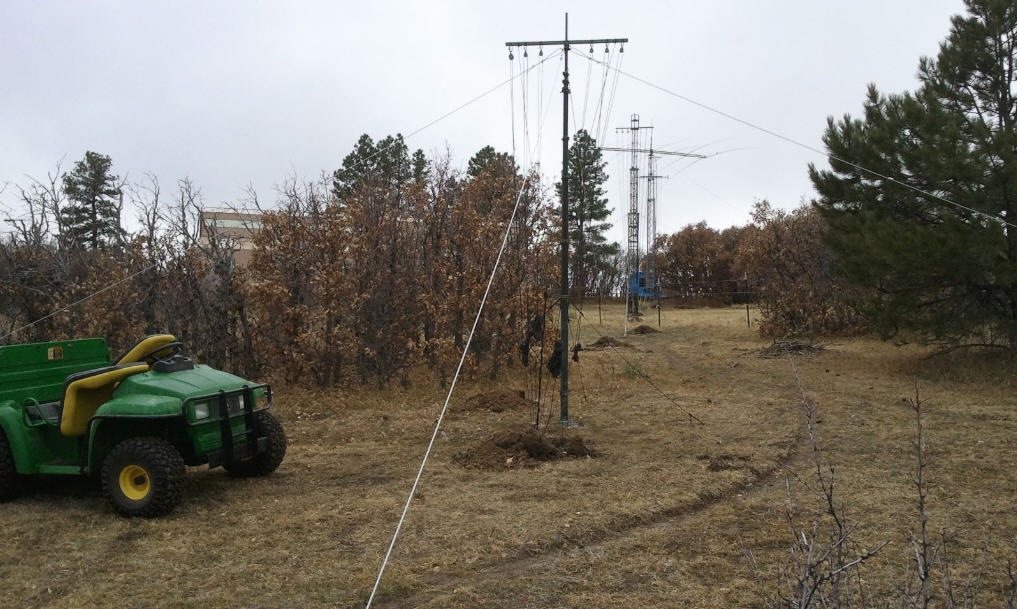 |
 |
 |
GAP VOYAGER DX-4 VERTICAL
for 160, 80, 40 and 20 meters |
TRI-EX (now Tashjian Tower Corp)
WT-51 Crank Up Tower |
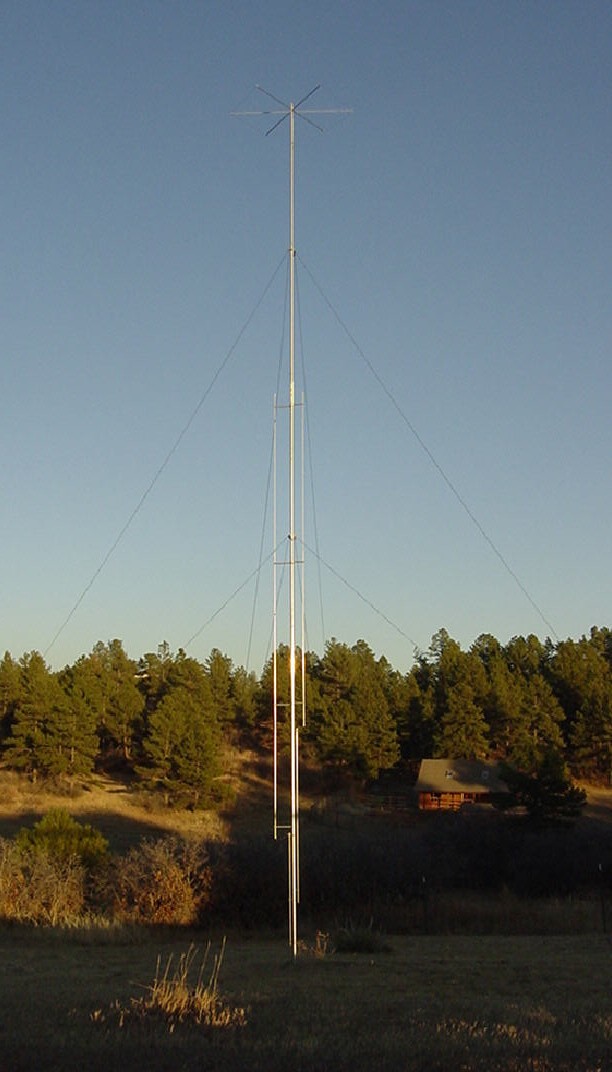
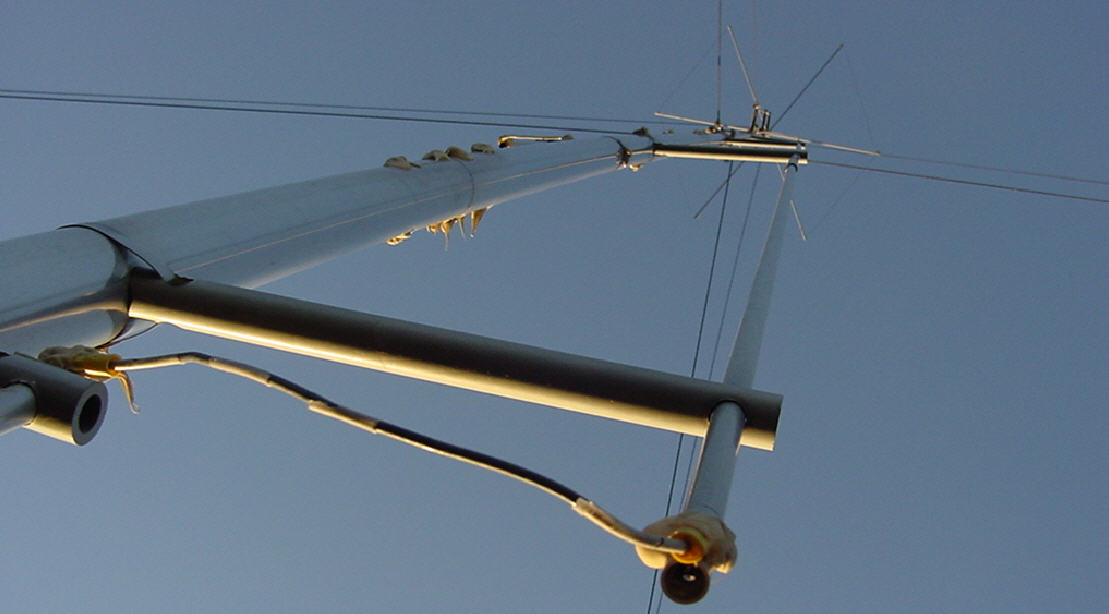
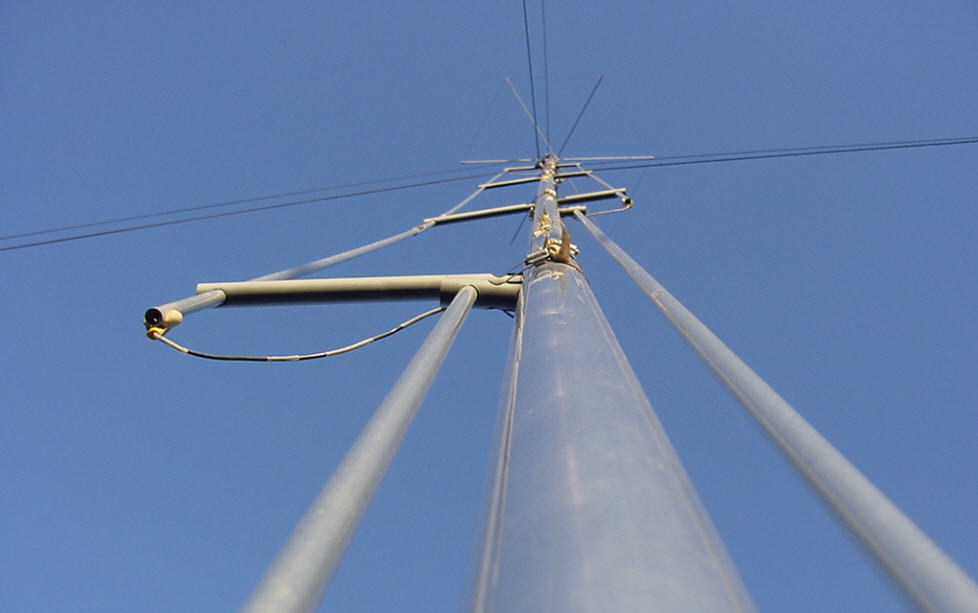 |
TRI-EX WT-51 TOWER STATISTICS:
When fully extended to the highest 51-foot (15.5m) height, the tower was rated for:
9-sq ft (.84m2) of antenna area at 50 mph (80kph)
5-sq ft of antenna area at 70 mph
3-sq ft of antenna area at 80 mph
Figure add-or-loss of 2-sqft per 10-mph
Dead Load rated at 150 pounds (68kg) max
The tower nests down to a 21-foot (6.4m) height and contains 417-pounds of steel
Additional information about the 51-foot Tri-Ex WT-51 crank-up tower.
During the transition from the Log Periodic over to the Mosley Pro67c-3
I worked with the Tri-Ex tower manufacturer to update the aging steel crank-up cable as well as the thrust bearing.
My interface with the manufacturer owner was very pleasant.
I can highly recommend them as competent and caring professionals.
Norman Tashjian
Tashjian Towers Corporation
2765 S. Temperance Ave., Fowler, Ca. 93625
Ph: 559-834-4300
Fax: 559-834-4377
|
CLICK ON A PICTURE TO ENLARGE IT FOR A CLOSER VIEW
MY AMATEUR RADIO HISTORY:
In the 1950's, although I had not yet experienced "amateur radio,"
I had started playing Radio DJ at a very young age
and commandeered the family "Radio-Phonograph."
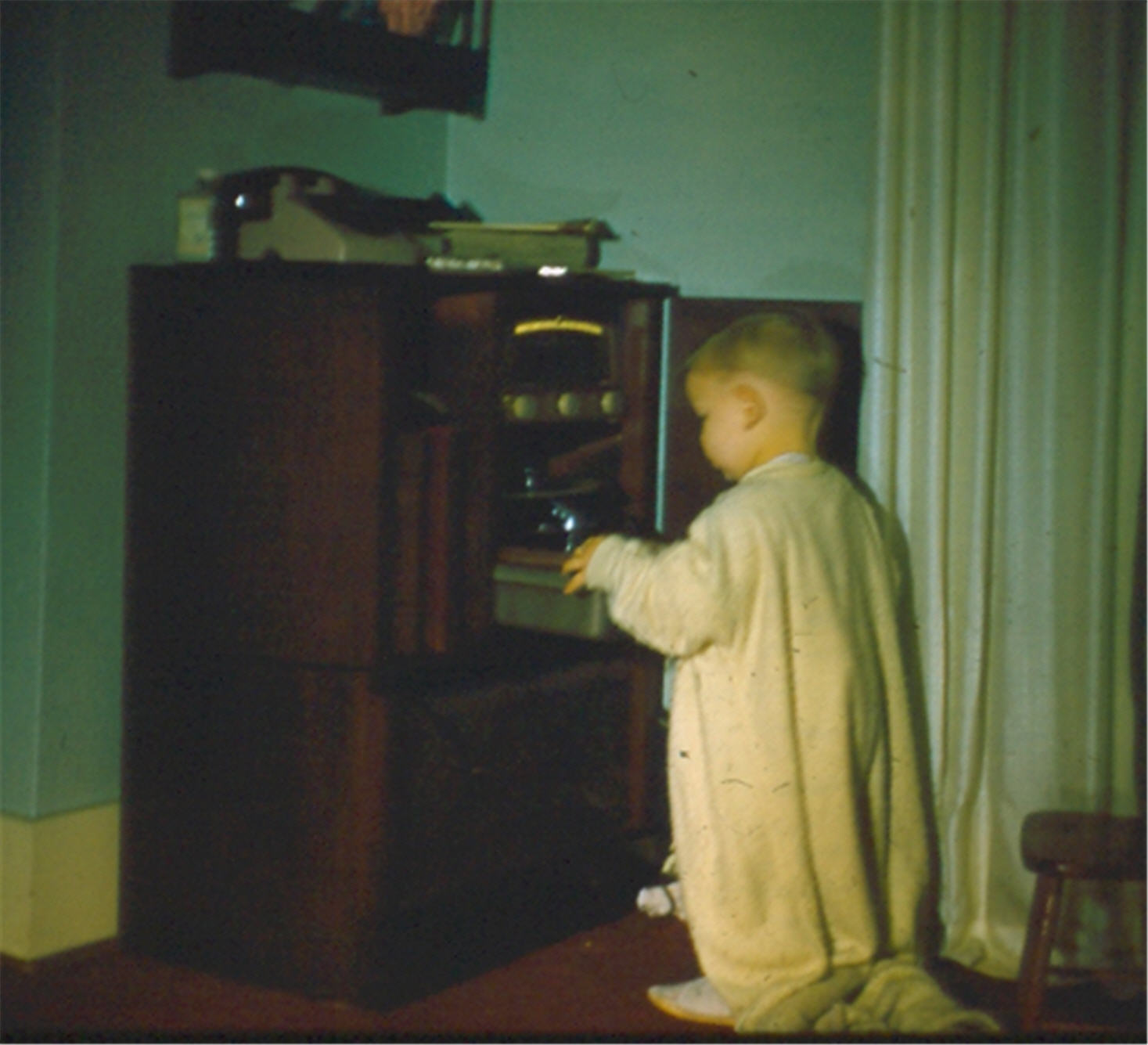
In the early 1960s, I would go to play with a neighbor friend
whose father (pictured below) was an amateur radio operator
(Ernie Longman - SK - W8SCU later W8DA,).
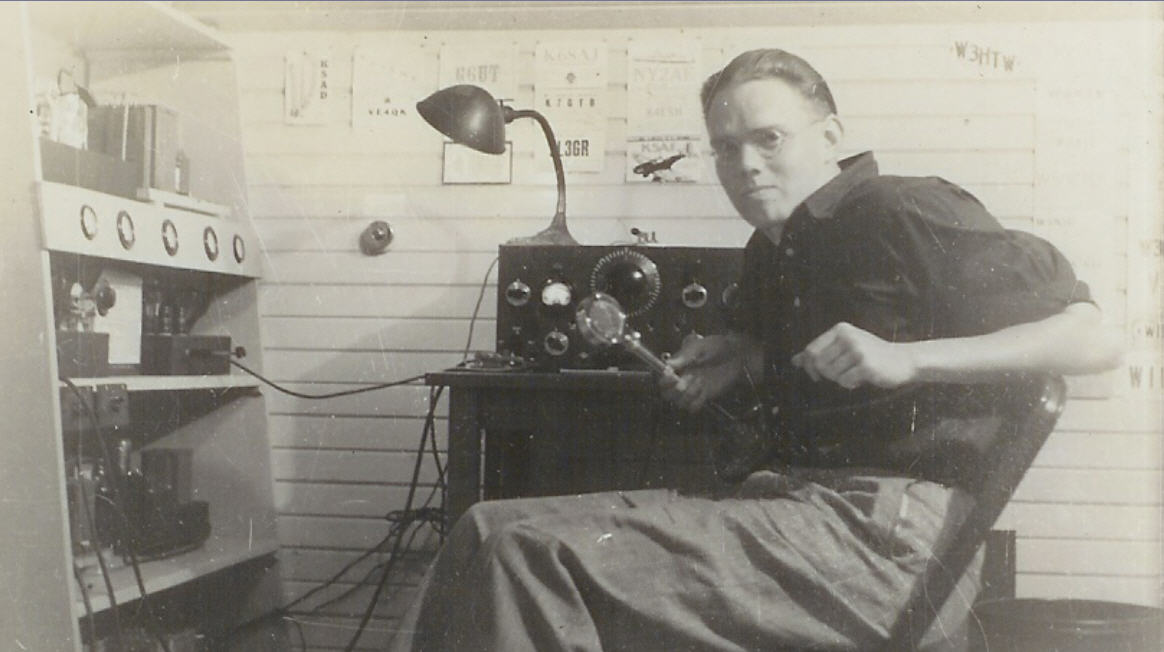 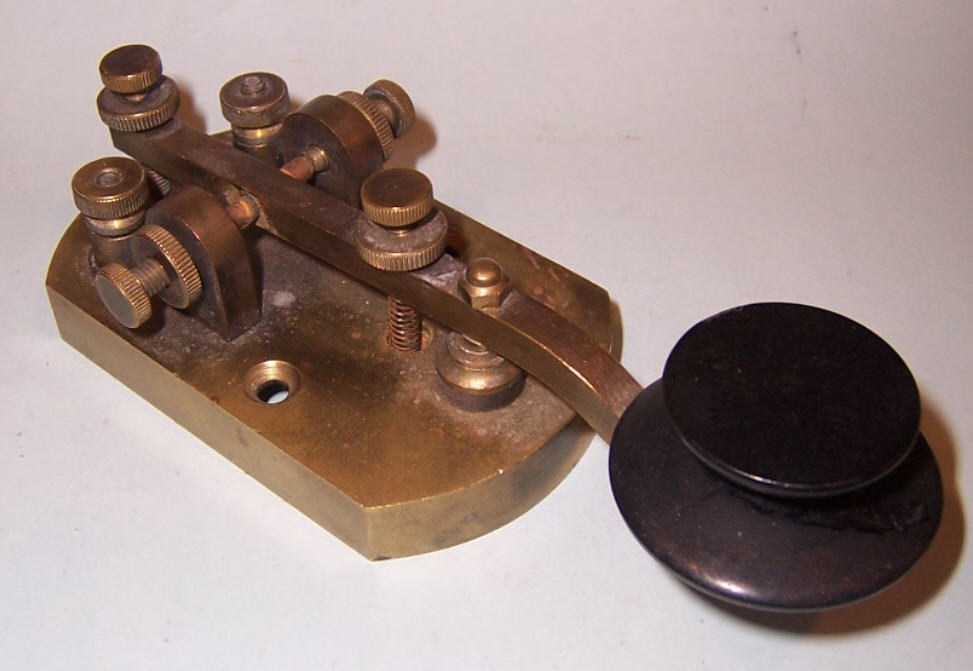
Ernie Longman used a Collins 75A-4 receiver and Johnson Viking 500 transmitter
(Later a Collins S-Line and finally a Drake-Line)
As a CW buff, he rarely used his Astatic D-104 microphone, deferring mostly to his Signal Electric brass-based Morse code key (or his early
Codex-brand electronic keyer). Later he changed out to a Vibroplex Vibrokeyer. I now have and still use his key to this day.
Although my grandfather, Kenneth Buck Sr (KIA on the USS Skill AM-115 during WW2), never got his amateur license before his WW2
deployment he was accomplished with the code.
Kenneth had owned and practiced with the same style Signal Electric key as Ernie used.
Kenneth's key, pictured above, was later passed down for me to use.
I still use it to this day.
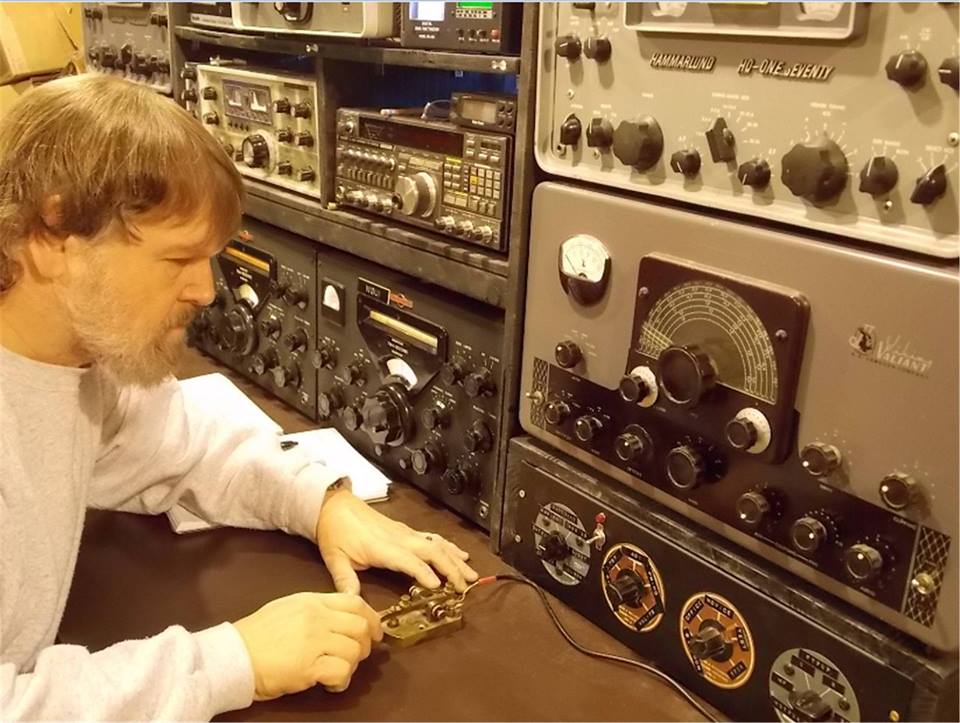
When W8DA would send his Morse code using his Johnson Viking 500 transmitter, the 866a mercury-vapor rectifier tubes in the power supply down by our feet would glow and the transformers would buzz. It was so fascinating to me as a child that it absolutely hooked me on the hobby.
In 1963, at age 8, my father built an "amateur radio console" out of WW2 army surplus equipment for me to play with.
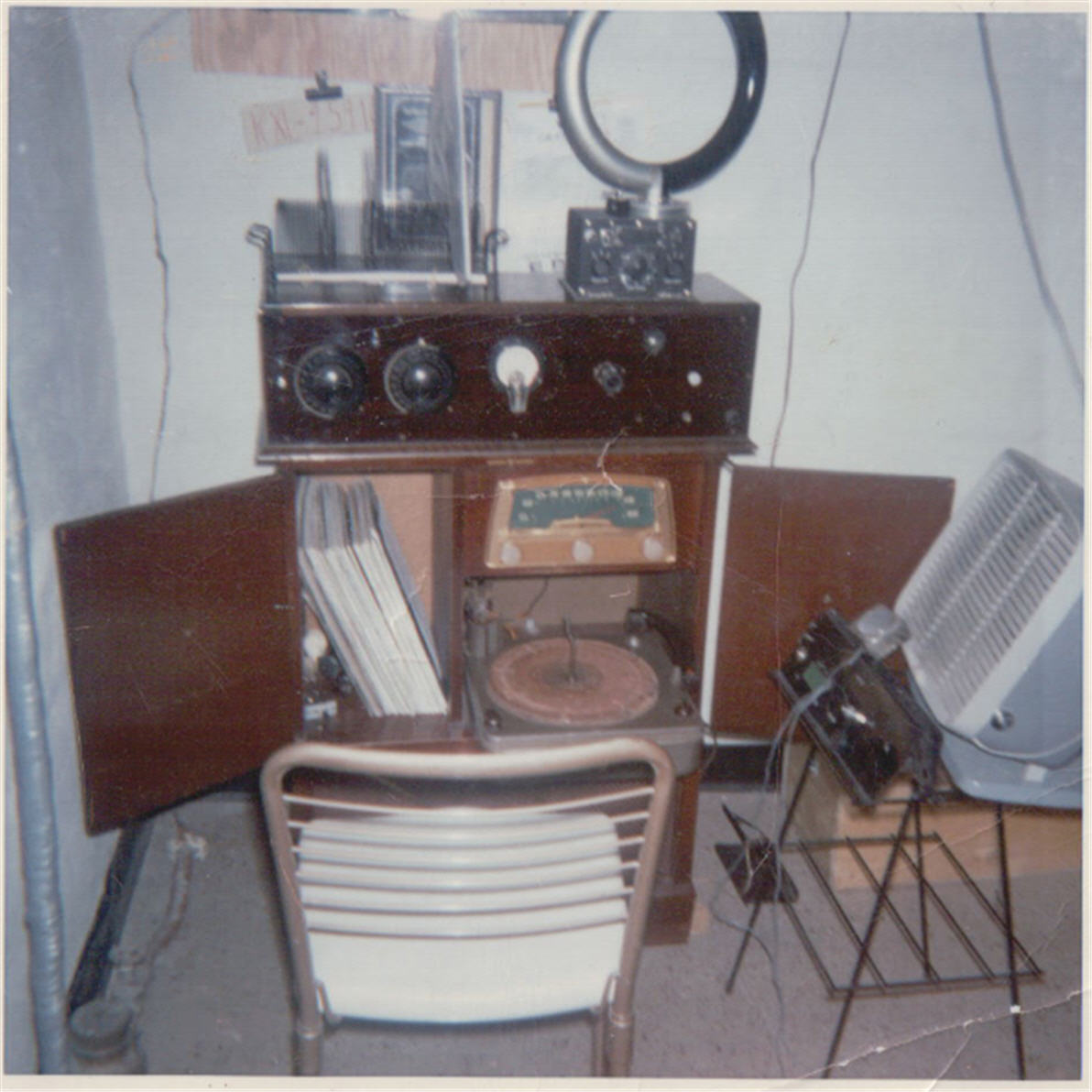
My first Morse code key was something I had made out of a block of wood, a scrap of metal and some screws and washers.
While I didn't actually talk to anyone, it was sure fun pretending.

Above - 1963: Home Brew pretend ham-shack
For a Cub Scout project, and using a Boy Scout publication called "Radio and Signaling,"
I built my first radio - an AM broadcast receiver that uses no batteries.
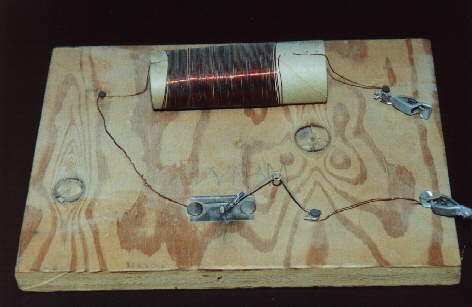
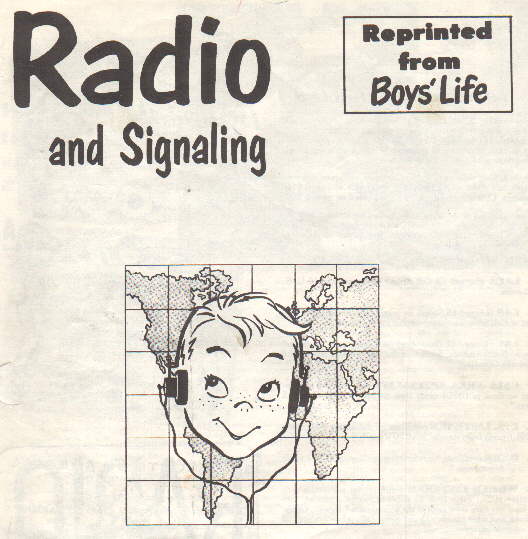
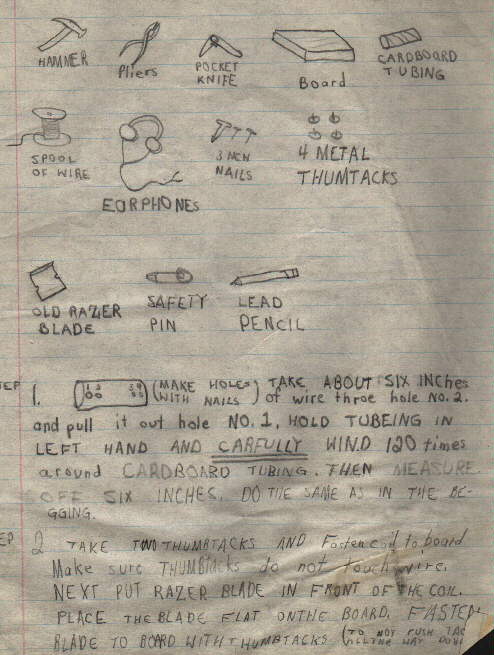
My first real receiver was a 1965 Allied Knight-Kit Star Roamer (below photo)
My father and I (actually, mostly my father) built the kit on the kitchen table.
At the annual First Methodist Church rummage sale I purchased a 1937 Philco 37-60 for 50-cents that added to my radio base.
I remember listening to HCJB, the Voice of America and Radio Moscow with it.
A simple random-length dipole was strung in the attic of our home above my bedroom.
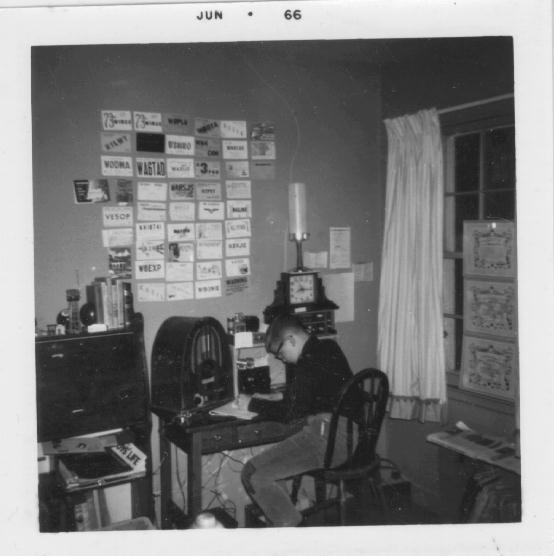
Above: as a Short-Wave Listener (SWL) before taking my novice test:
Philco 37-60 Cathedral AM-SW radio, home-brew HF receiver,
Allied Knight-Kit Star Roamer receiver
Below as a Short-Wave Listener (SWL) before taking my novice test:
Philco 37-60 Cathedral AM-SW radio, Allied Knight-Kit Star Roamer receiver
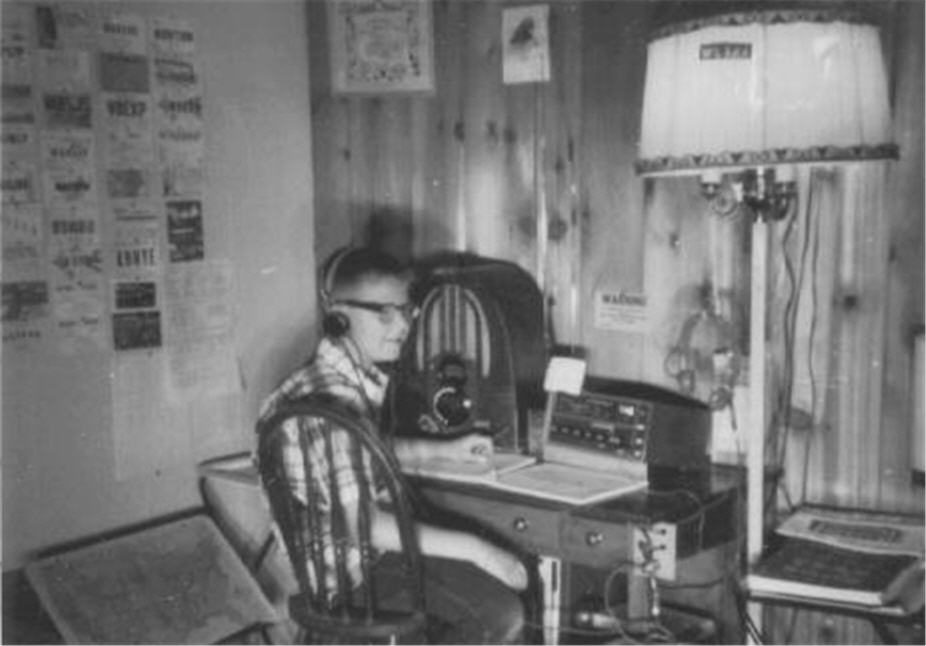
BELOW: Today the (1937) Philco 37-60 radio lives in our dining room (right).
On the left if the (1937) Zenith 5-R-135 that had belonged to my father-in-law.
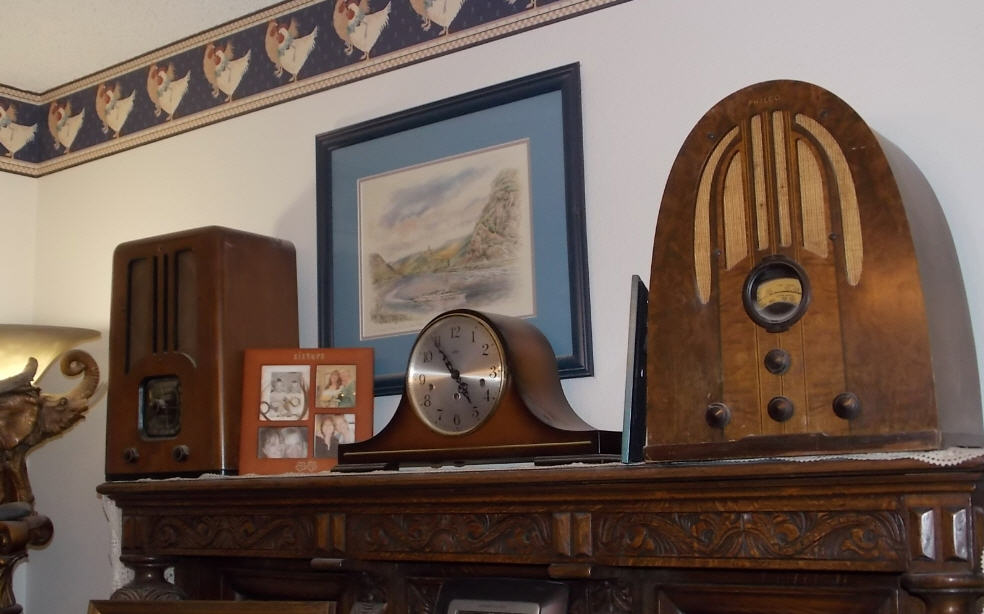
FINALLY A "REAL" HAM OPERATOR!
In 1966 at the age of 11, with trembling hands, I passed my first ever Morse code test followed by my first ever amateur radio written exam.
There was no electronic mail back then and all application processing was still done by hand.
Seemingly, the arrival of the license in the mail was painfully slow.
The "ticket" finally arrived mid-morning on a Saturday. I was so excited.
I called Mr. Longman who agreed to could come over later in the day and help me get on the air.
It was probably the longest day of my entire 11 years of life. The waiting was horrific and time passed slowly.
Finally late in the dark cold blustery Michigan December night he arrived (I already had my pajamas on for bed).
He worked with me to set up the Johnson Adventurer transmitter and explained "peaking the Grid" and "dipping the Plate."
I would first tune up into a 60-watt light bulb dummy load and then switch out onto an 80-meter dipole that we had previously hung out in the back yard.
I owned two crystals: 3.712 and 3.737
There was a toggle switch attached to the upper corner of the transmitter to activate the antenna relay mounted to a small board attached to the back of the rig.
Finally there I was... on the air.
What joy filled my young heart.
I had worked hard to earn my license.
This was the real thing and I was a part of it.
Below: 1966 - First licensed at age 11
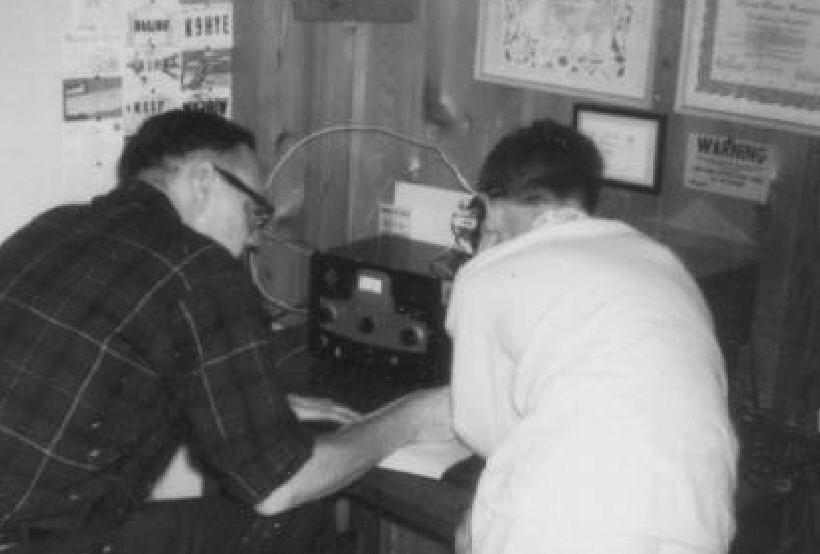 
Above: Johnson Adventurer transmitter, Allied Knight-Kit Star Roamer receiver
I used a dipole during this era.
On my 12th birthday (1967), my father bought a used Hammarlund HQ-110c receiver from Tony Lameika, WA8GQY (SK), to replace the Star Roamer.
Over time I saved up enough money for a down payment to buy a used Vibroplex Blue Racer bug from Tony, too.
He let me make installment payments for it.
Total cost to me was $15.00.
I still have and use it to this day.
Below: 1967 - Age 12
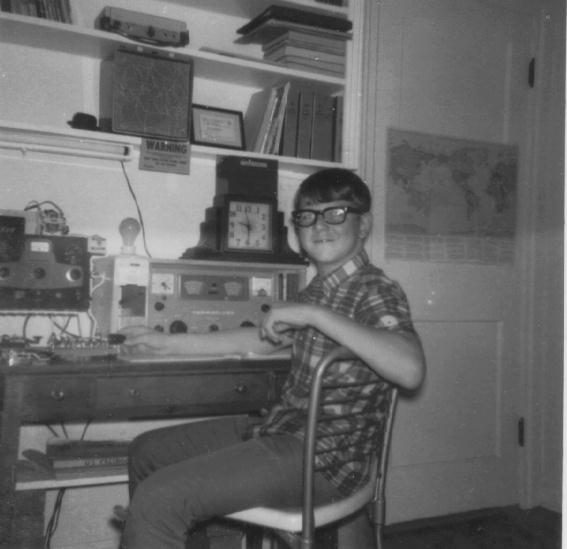
Above: Johnson Adventurer transmitter, Hammarlund HQ-110c receiver
I used a dipole during this era.
Everything was all Morse code back then.
For my general-class license exam, my father drove me from Jackson to Detroit (Michigan) where we found our way to the FCC examination office.
It was much different from today.
Sitting in an all-glass room with FCC personnel watching from all sides it was very serious, quiet and intimidating.
The examiner sent five-minutes of Morse code at 13 words-per-minute.
Out of that five minutes, we had to copy at least one full minute with no errors.
I passed the receiving part no problem.
Then I awaited my turn for the sending requirement.
When it was my turn I was called to the front of the room and had to send (up to) five minutes at at least 13 words per minute with no errors.
I passed the sending part, too.
Sent back to the hard wooden old-fashion school house style desk I wrote the general class exam.
There were no multiple choice questions or pre-drawn diagrams.
I was expected to draw, from memory, Colpits and Hartley oscillators in a circuit.
There was a lot of theory and you were expected to know the correct formula to arrive at the answers to the questions.
With no multiple choice, you either knew it or you didn't.
Amateur radio licenses were truly earned.
There was no Freedom Of Information or Multiple Choice stuff back then.
And, when you earned your license, you were darned proud... it was really an honest-to-gosh Badge Of Honor.
QUESTION: Does anyone have any photographs of an old FCC "Glass Exam Room?"
I'd sure like to see one again! How intimidating they were as a child and young adult!
Below: 1972 - Age 17 with six years in amateur radio
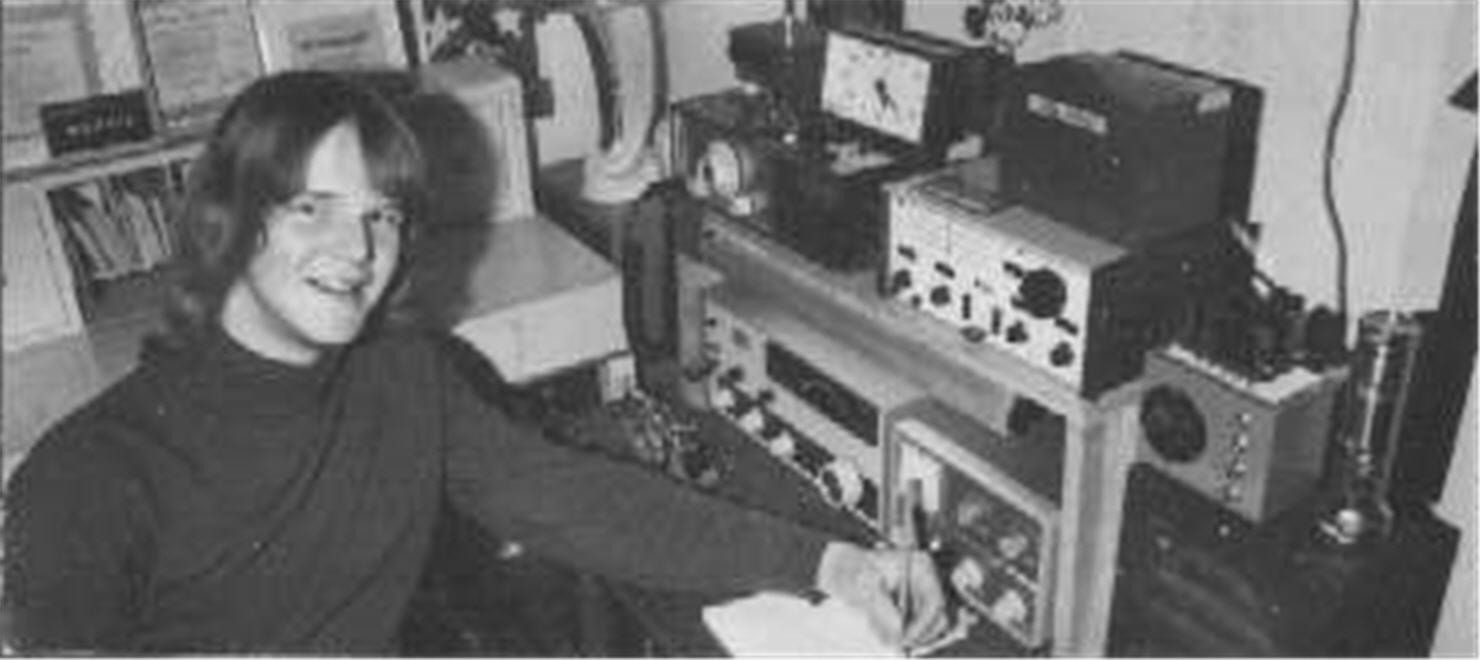
Above: Heathkit HW-16 transceiver, Eico 723 transmitter, Ten-Tec PM2a QRP transceiver
The HW-16 was my first ham transceiver. I used a dipole during this era.
Below: 1977 - Age 22 with 11 years in amateur radio
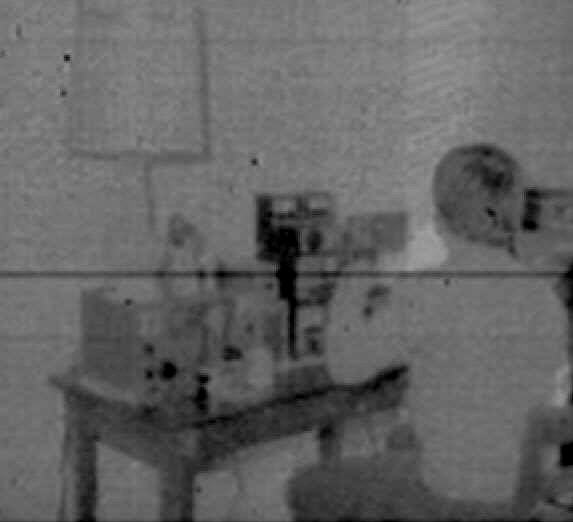
Above: Hammarlund HQ-110c receiver, Eico 720 transmitter (sorry about the poor picture quality)
I was living in an upstairs apartment in Mason, Michigan at the time and used a Hygain 14-AVQ vertical antenna up on the roof.
In 1977, I bought a used Yaesu FTdx-560 HF transceiver that had far exceeded my every expectation.
In this era Radio Shack came out with the TRS-80 Level One computer.
It generated plenty of noise into the receiver.
Although it didn't have much ham-related use at the time, it sure made for an impressive installation.
Below: 1977 Here the Eico 720 transmitter was replaced by a used Yaesu FTdx-560.
I used a ground-mounted Hygain 14-AVQ vertical antenna during this era.
I continued to operate mostly all Morse code.
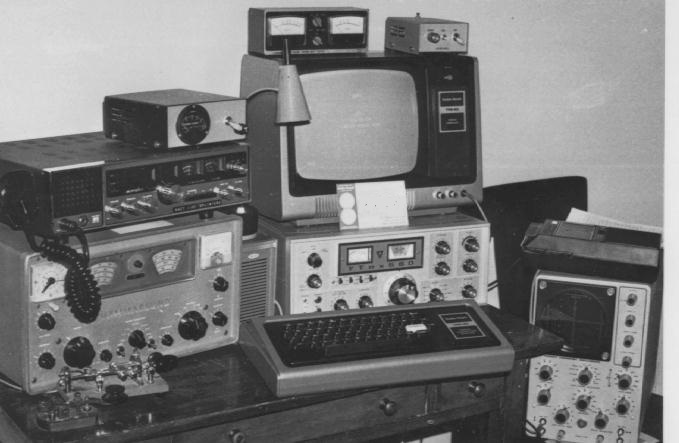
Above: The Eico transmitter was replaced by my first transceiver, a used Yaesu FTdx-560.
Hammarlund HQ-110c receiver and a Radio Shack TRS-80 (early series) personal computer, Heathkit IO o-scope
Below: 1978 Below - Age 23 with 12 years in amateur radio
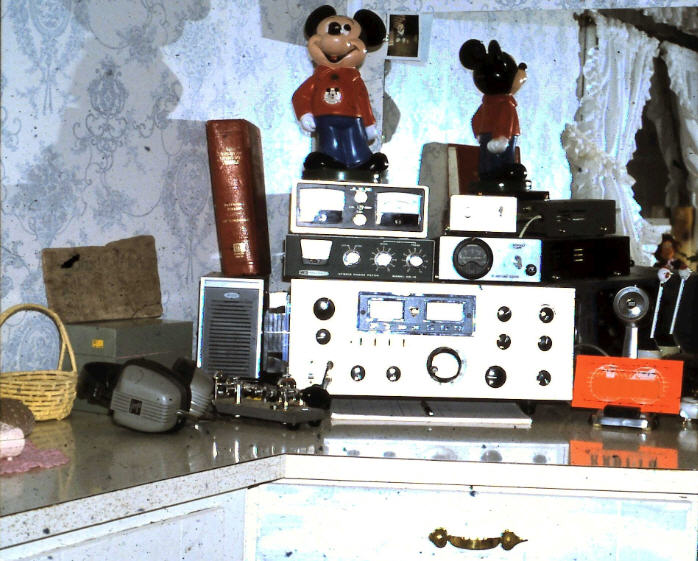
Above: The Yaesu FT-401b transceiver with the Vibroplex Blue Racer "bug" (key) that I had bought when I was 12.
Although I had a microphone available, it rarely saw much use.
Below: 1982 - Age 27 with 16 years in amateur radio

Above: Heathkit Warrior linear amplifier, Collins 75a4 receiver with Icom-701 on top
I used a Hustler 5-BTV ground mounted vertical during this era.
Morse code was still the predominate mode of communications.
Below: 1984 - Age 29 with 18 years in amateur radio
My XYL (bless her tolerant heart) allowed me to move my ham station into the bedroom!
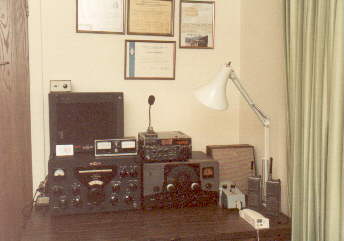
Above: Collins 75a4 receiver, Johnson Ranger transmitter with Icom-701 on top
I used a Hustler 5-BTV ground mounted vertical during this era.
Morse code was still my predominate mode of amateur radio communications.
In late 1983 I had started working with the US Army MARS program as their designated
Colorado/Wyoming Army MARS phone patch operator.
My career took me (with my FCC Commercial Radiotelephone license) into the
(Mountain Bell) Bell System Two-Way Radio Shop.
Below: When out and about in a company van or Suburban,
I would carry a Wilson Mark-II or Mark-IV VHF six-channel ham handi-talkie.
The Wilson's were ahead of their time in size and performance.
I still have them today.
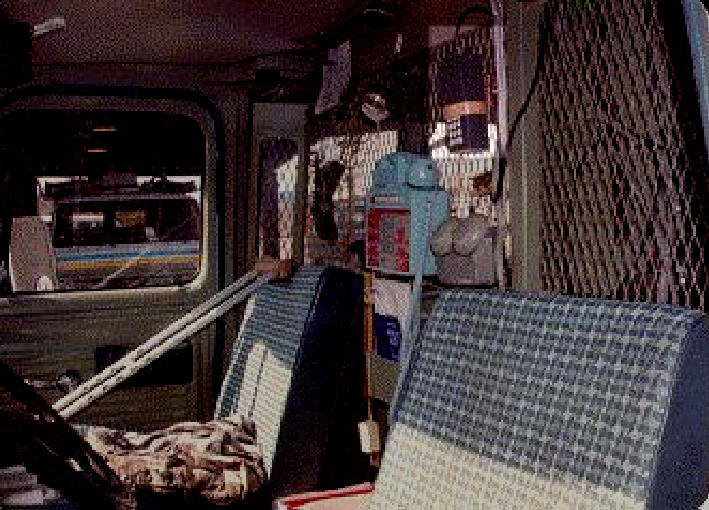 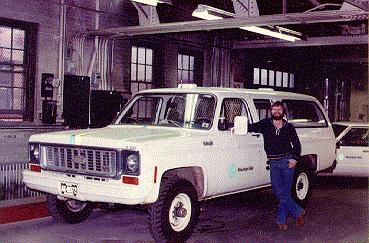
Below: 1986 - Age 31 with 20 years in amateur radio
As a software engineer with AT&T, I would
work my evening callouts from home
using a 2400-baud modem and an AT&T 4425 dumb terminal.
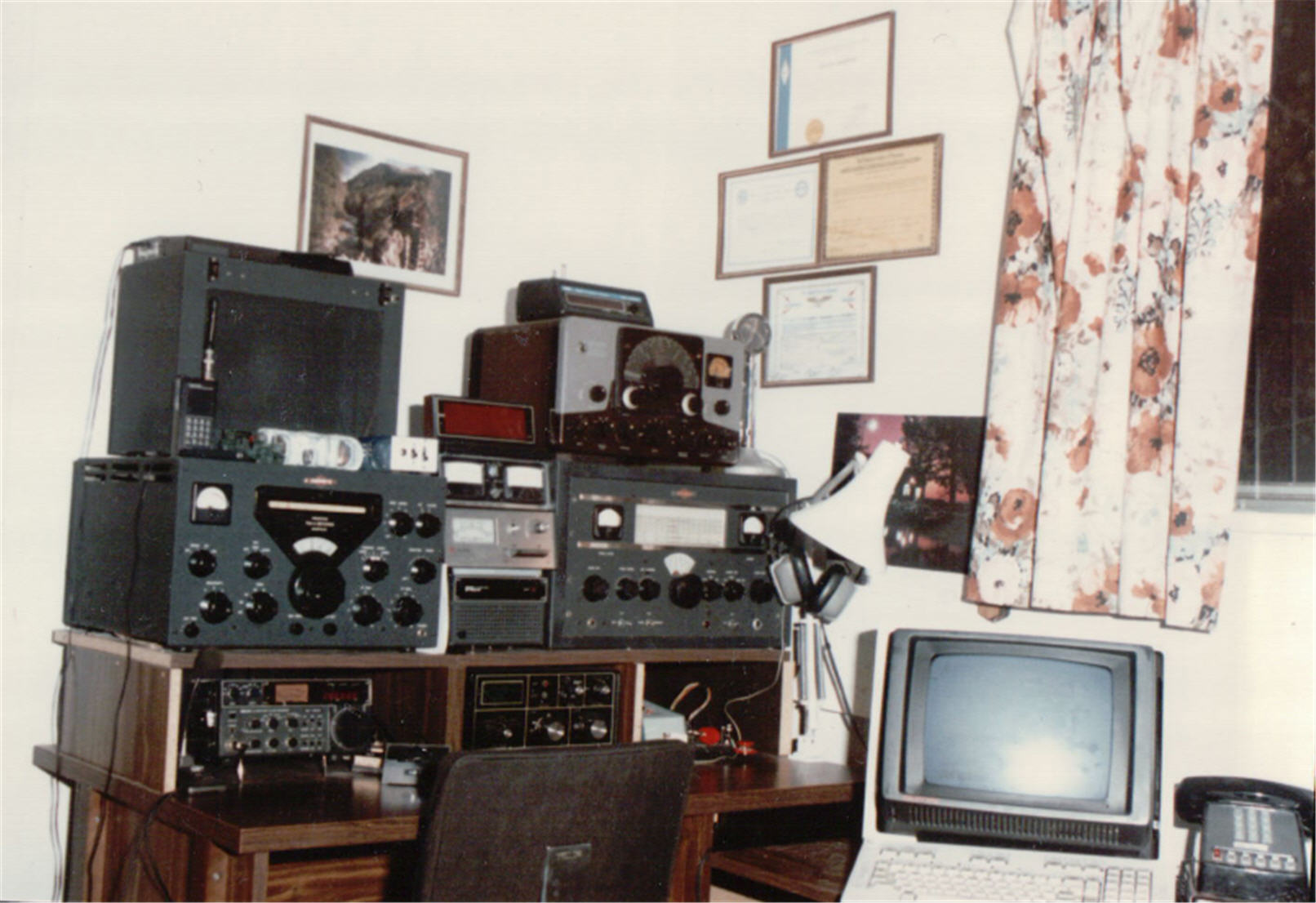
Above - Top Row: Collins speaker, Johnson Ranger transmitter
Above - Main Row: Collins 75a-4 receiver, Collins 32v-2 transmitter
Above - Desk-Level Row:
Icom-701 transceiver. Dentron GLA-100b amp,
Heathkit keyer fed by a Brown Bros. CTL-B double code key
I used Hustler 5-BTV ground mounted vertical and
a Tennadyne T5 log periodic antennas during this era.

Above: Meeting with my
mentor, Ernie Longman (W8DA, sk) in his hamshack.
Below: 1988 - Age 33 with 22 years in amateur radio
Collins KWS-1 transmitter (below) and 75a4 receiver (above it), Hammarlund HX-50 transmitter
Johnson Ranger transmitter, Dentron GLA-1000b amplifier.
Icom-701 transceiver. Brown Bros. CTL-B double code key
AT&T PC-6300+ Unix/Windows PC
I used Hustler 5-BTV ground mounted vertical and a Tennadyne T5 log periodic antennas during this era.
Although I had bought my first Astatic D-104 microphone, it rarely saw any use.

BELOW: The Tennadyne T5 "Hawk" log periodic antenna
sported five-elements on a 12-foot boom.
Living in the city of Denver it was the biggest that I could install at the time.
It worked well supporting my efforts with the Army MARS program. It supported 13-30 mHz.

Below: 1989 - Age 34 with 23 years in amateur radio
Left to right:
Johnson Ranger transmitter atop the Yaesu FT-401b transceiver atop the Collins KWS-1 power supply
Collins 75a4 receiver, KWS-1 (transmitter) exciter, Dentron GLA-1000b linear amplifier
AT&T PC-6300+ Unix/Windows PC (and a Guild F-512 12-string guitar just because)
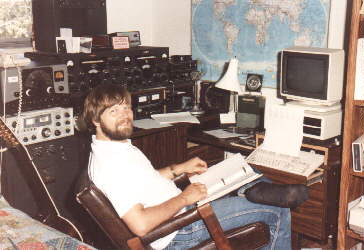
My amazingly tolerant XYL who has always supported my hobby "to the max."
(The home-made Cub Scout project radio is sitting top left above the Yaesu!)
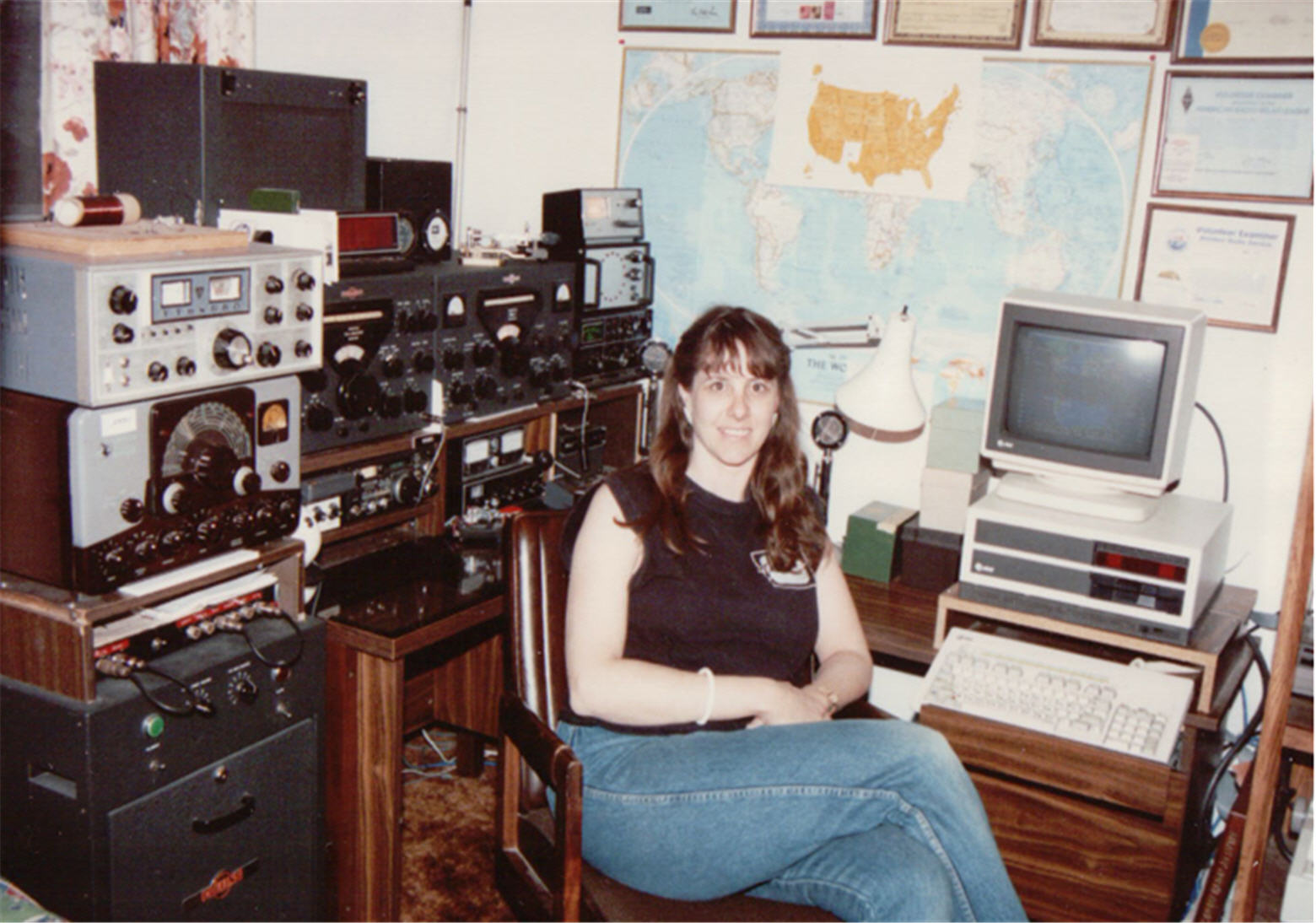
Left to right:
Yaesu FTdx560 transceiver atop the Johnson Ranger transmitter atop the Collins KWS-1 power supply
Collins 75a4 receiver, KWS-1 (transmitter) exciter, Dentron GLA-1000b linear amplifier, portable DF unit
Icom 730 transceiver, MFJ antenna tuner, Icom power supply
Below: 1991 - Age 36 with 25 years in amateur radio
Collins KWS-1 transmitter, Collins 75a4 receiver, Johnson Ranger transmitter,
Yaesu FT-767gx, Dentron GLA-1000b linear, Yaesu FTdx560.
During the Gulf War, I upgraded the phone patch technologies I used for Army MARS.
I used a Hustler 5-BTV ground mounted vertical and Tennadyne T5 log periodic antennas during this era.
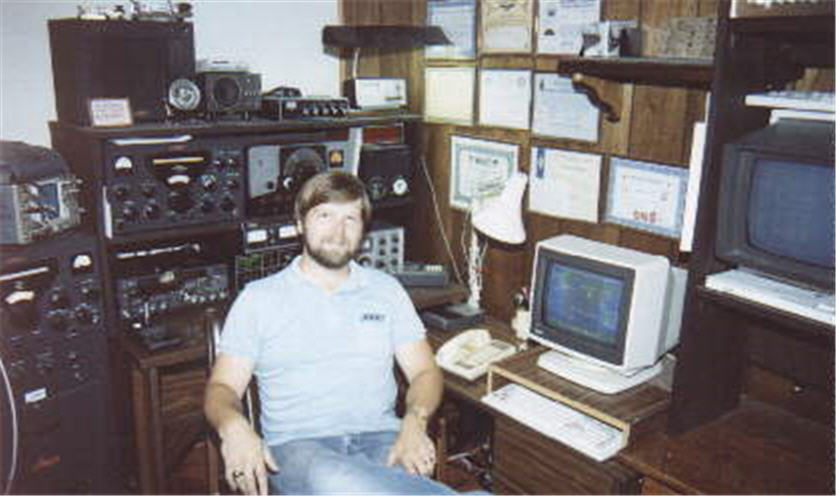
Below: 1998 - Age 43 with 32 years in amateur radio
Collins KWS-1 transmitter (lower), Collins 75A-4 receiver (atop it)
Johnson Valiant transmitter, Johnson Pacemaker paired with Johnson Thunderbolt linear
Hammarlund HQ-170, Johnson Ranger transmitter, Yaesu FT-767gx, Dentron GLA-1000b linear
Antenna/Rig switch box, Collins HF-380 transceiver, Two Yaesu FT-757gx transceivers (for HF/VHF packet)
Having moved out to the country in May of 1993, I was able to enhance my antenna arrays.
I used both Tennadyne T5 and T10 log periodic antennas during this era.
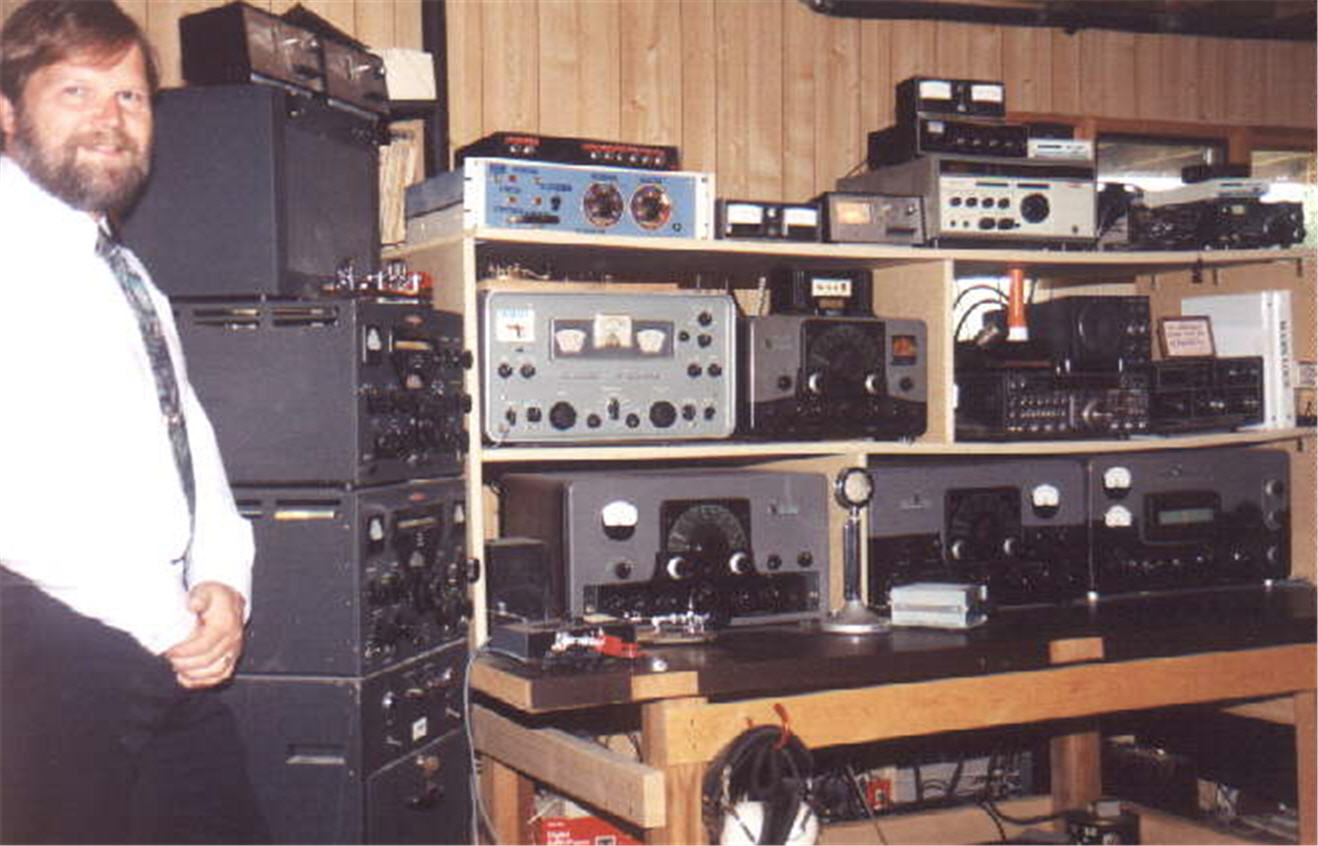
Below: 2013 - Age 58 with 47 years in amateur radio
Three different years WØUI has hosted the annual "Boy Scout Jamboree-On-The-Air" event at his ham shack.
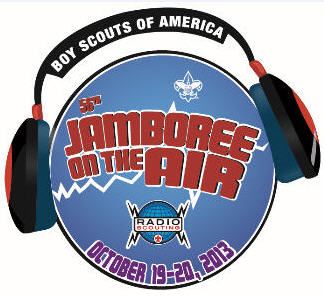
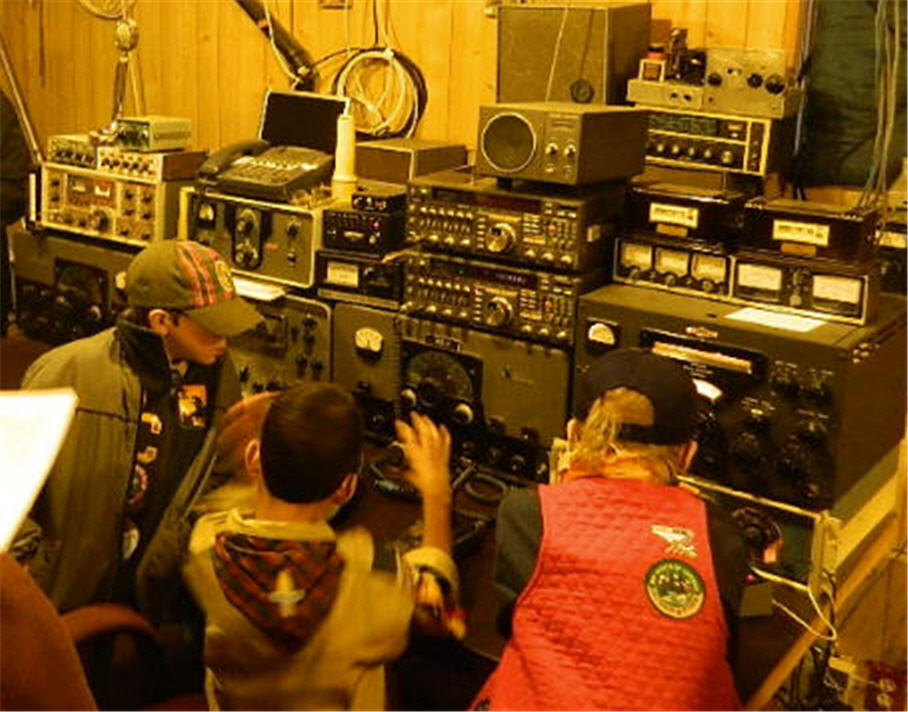 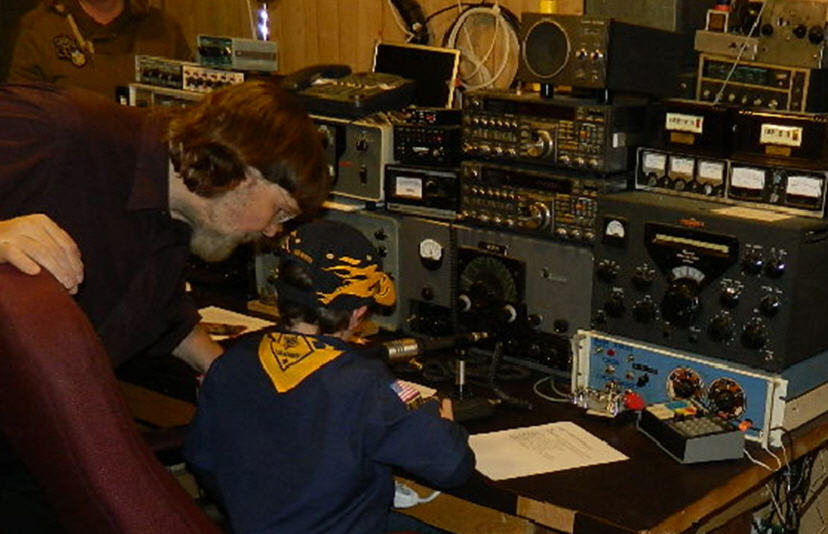
Below: 2013 QSL card
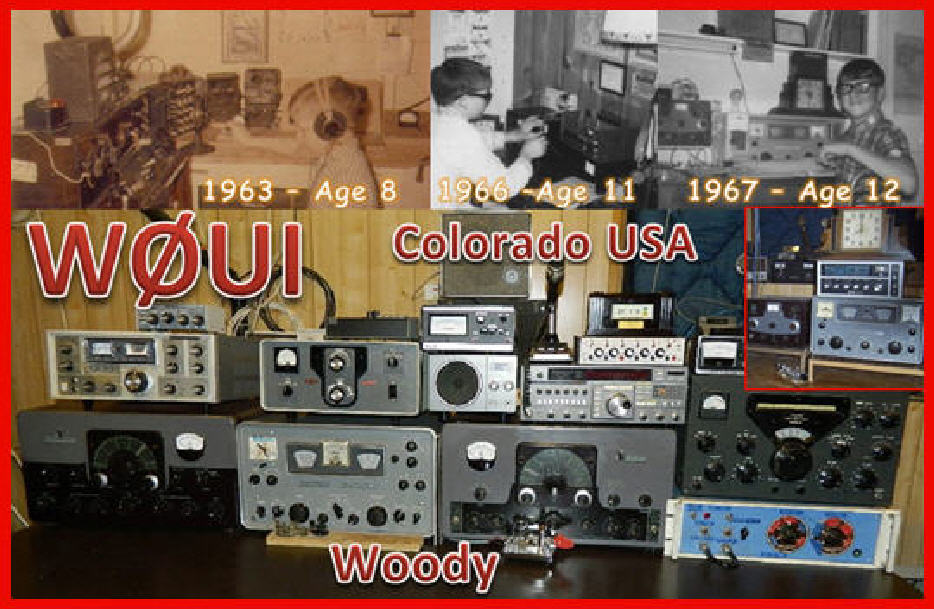
Below: "Woody" WØUI 2015 - age 60 49 years a ham (2015 through 2019)
Right: My "Early Station" desk is at the far end of the primary operating console.
Left: Operating ARRL Straight Key Night (SKN) with my grandfather's code key
 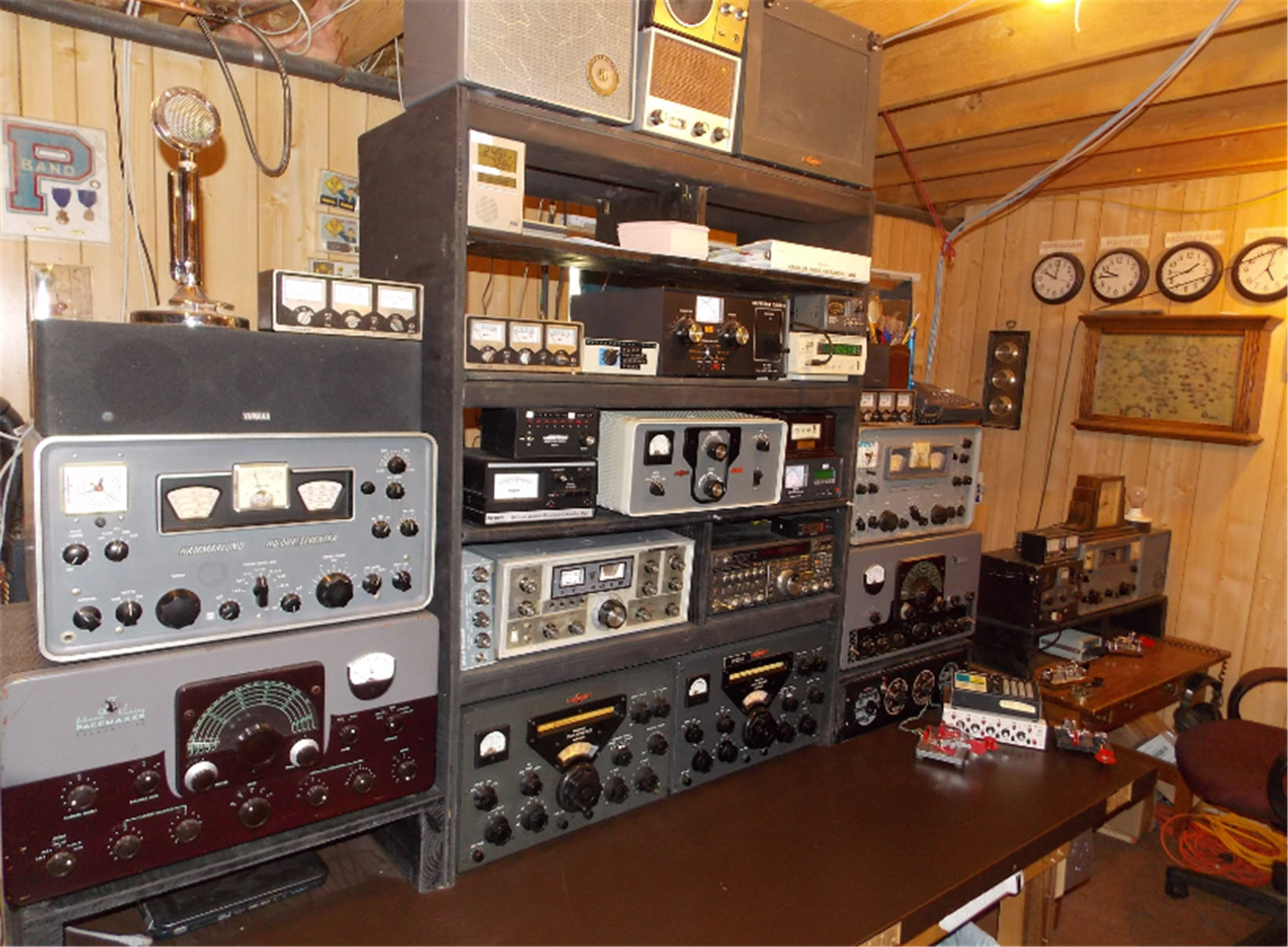
Below: 2015 QSL card
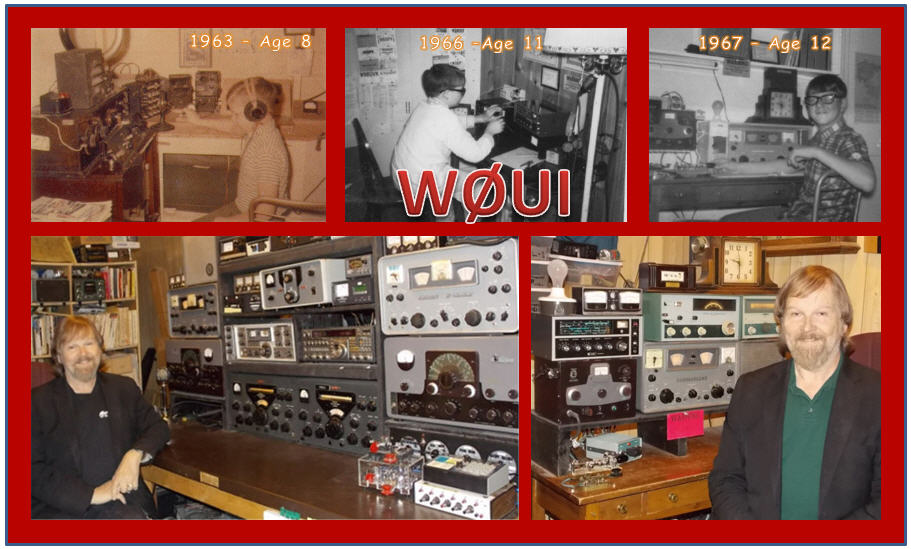
Below: WØUI 2015 through 2019
Left-to-Right: Johnson Pacemaker transmitter, Hammarlund HQ-170a-VHF,
Collins 75a4 (paired with Pacemaker for 80-meters),
Collins 75a4 (paired with Valiant for 40-meters), Johnson Valiant, Hammarlund HQ-170
Center, L-R: Yaesu FT-401b, Yaesu FT-676gx
Control for Ham IV rotor, Collins 30L-1 linear amplifier, MFJ-828 meter
Morse code remained the predominate mode of amateur communications.
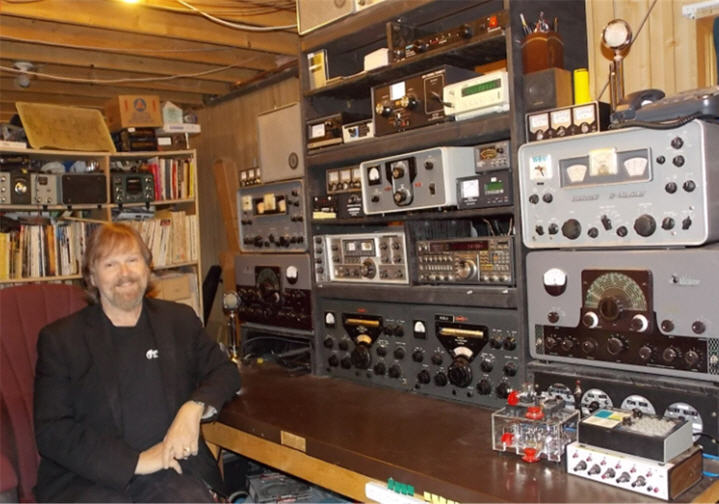
June, 2018 Field Day CW station - "Woody" WØUI, with XYL
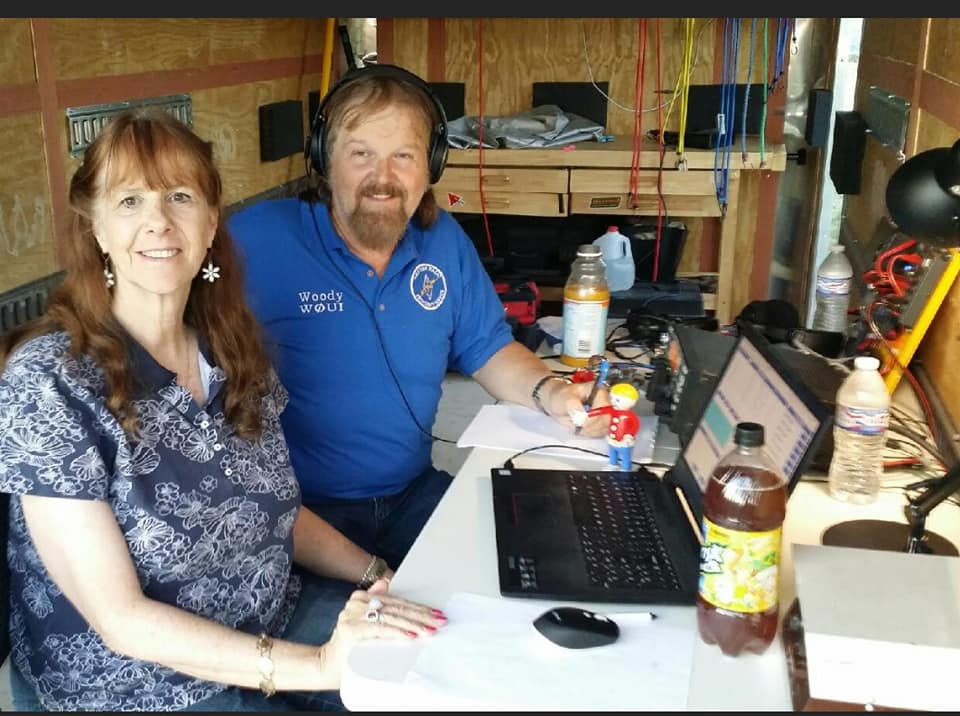 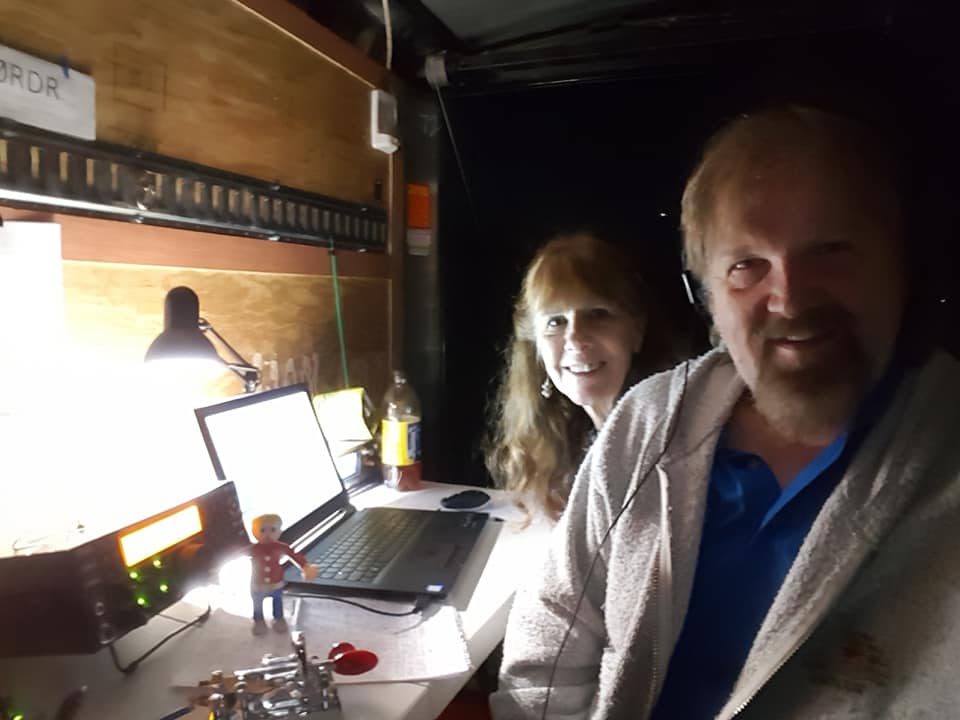
Below: "Woody" WØUI Fall 2019 - age 64 53 years a ham
Left-to-Right: Johnson Pacemaker transmitter, Hammarlund HQ-170a-VHF,
Collins 75a4 (paired with Pacemaker for 80-meters),
Collins 75a4 (paired with Valiant for 40-meters), Johnson Valiant, Hammarlund HQ-170
Center, L-R: Yaesu FT-401b, Yaesu FT-676gx
Control for Ham IV rotor, Collins 30L-1 linear amplifier, MFJ-828 meter
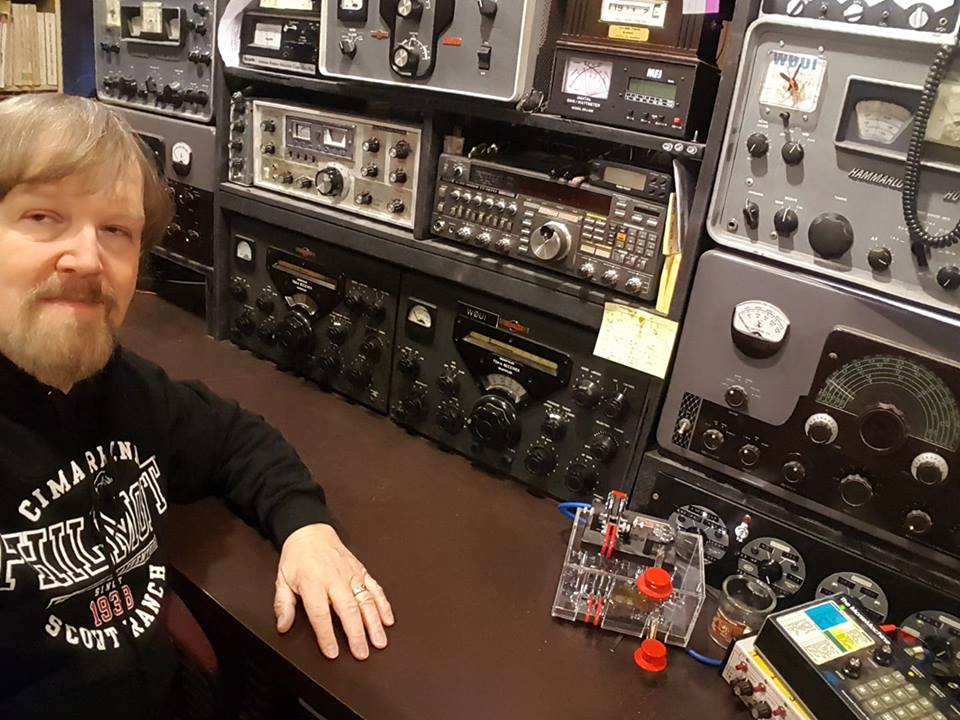
Above: The Brown Bros. CTL-B double key connects to the AEA Morse Machine MM-3 electronic memory keyer.
This system connects to the Yaesu FT-767gxii transceiver.
The Vibroplex double key connects to the MFJ-486 Grandmaster II electronic memory keyer.
This then runs through a switch which allows me to use this key and keyer with any of the vintage tube equipment as desired.
January 2020 main operating console at WØUI in transition and
Personally owned radios awaiting their time on the bench for repair and/or restoration
Upper Middle center shelf: (1983) (Aeroflex) IFR FM/AM-1100s Service Monitor
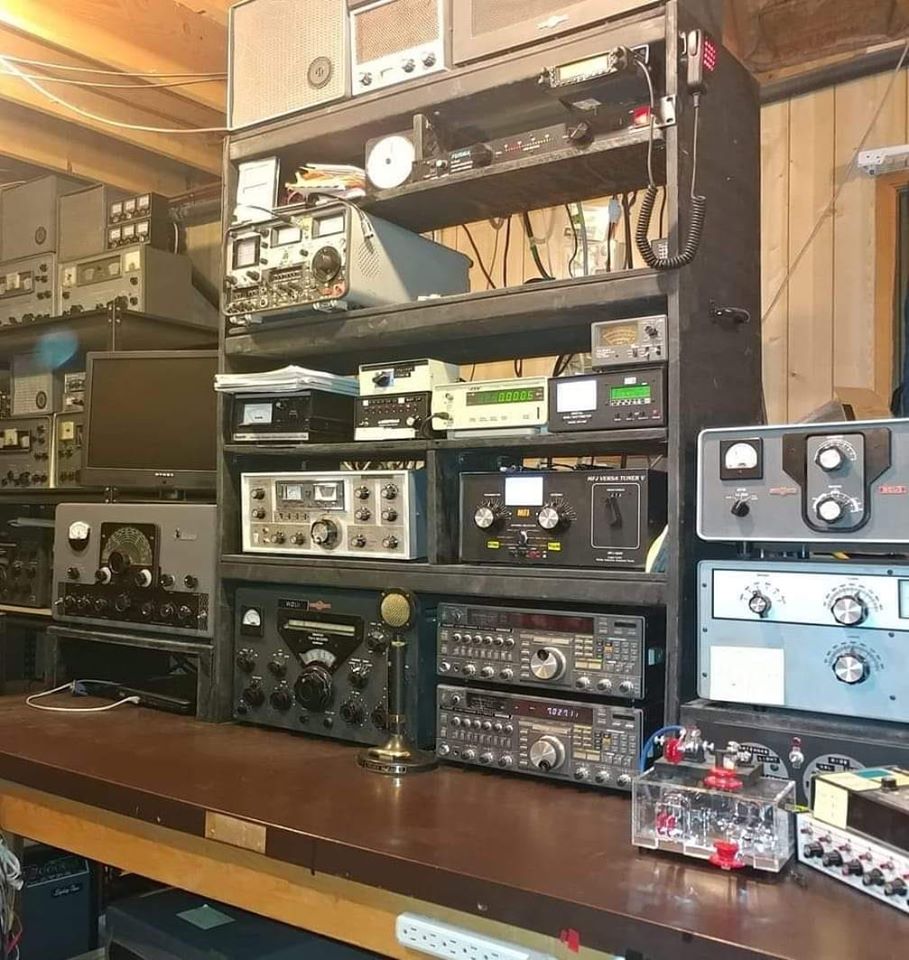 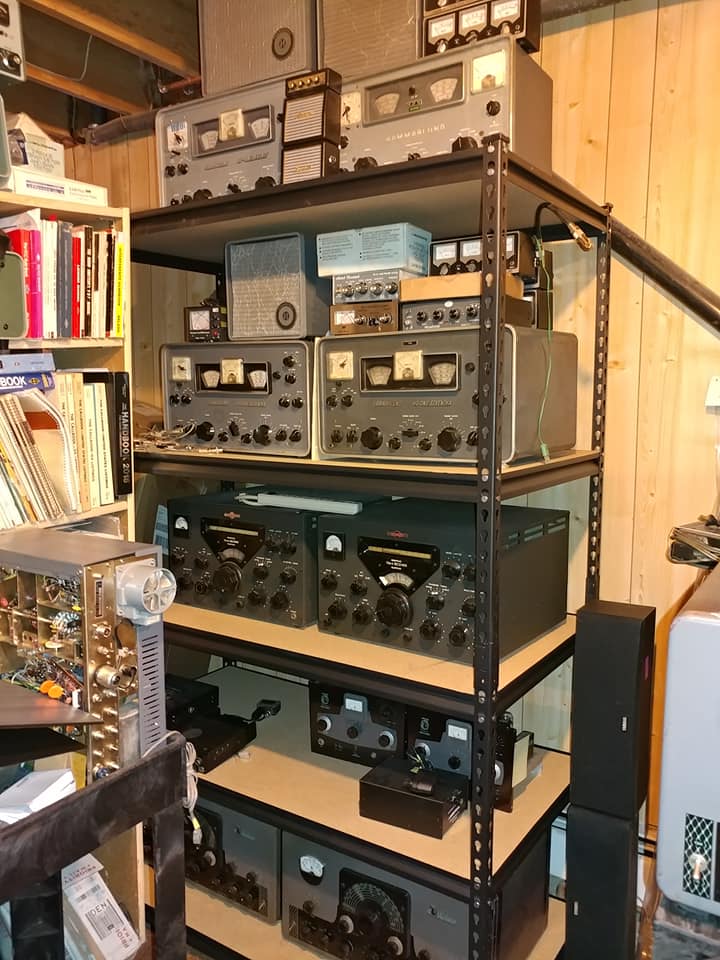
CLICK ON A PICTURE TO ENLARGE IT FOR A CLOSER VIEW
June 2020 FIELD DAY!
Due to some health concerns we operated this year's Field Day from the home ham
shack.
On Phone (voice) contacts, Lorelei was mostly on the microphone while Woody
logged.
On CW contacts, Woody ran the code key while Lorelei helped with the logging.
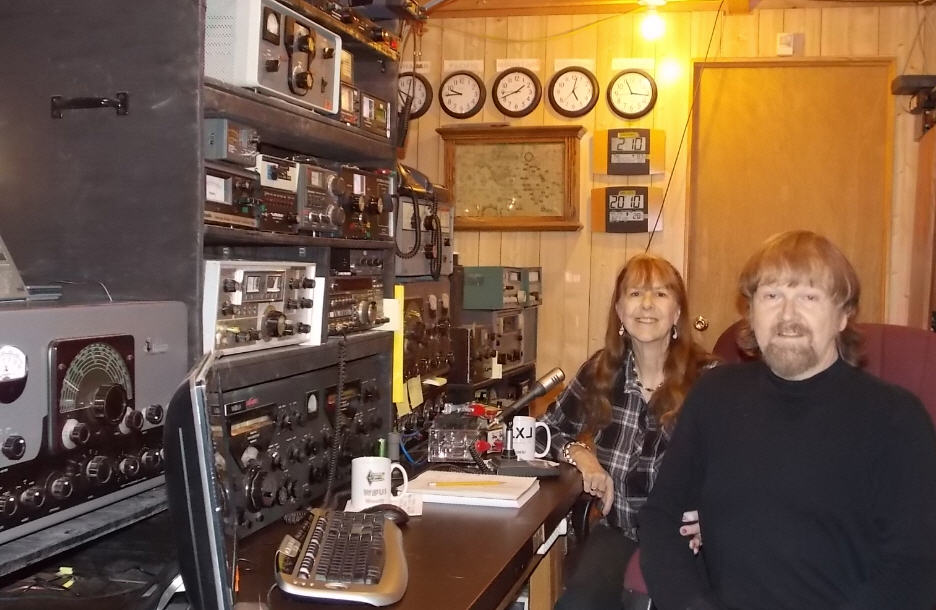
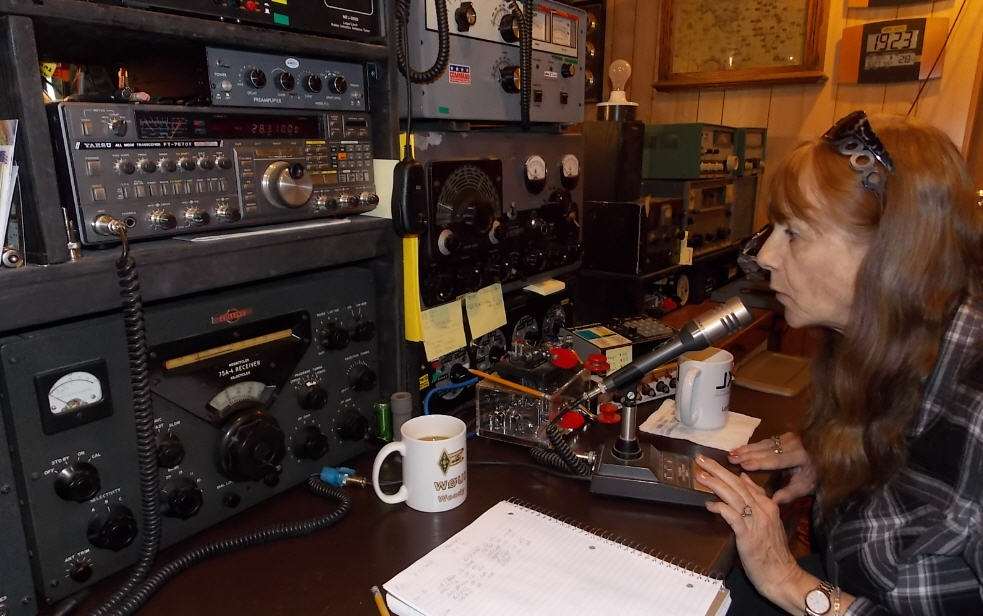
Below: July, 2020 main operating console at WØUI
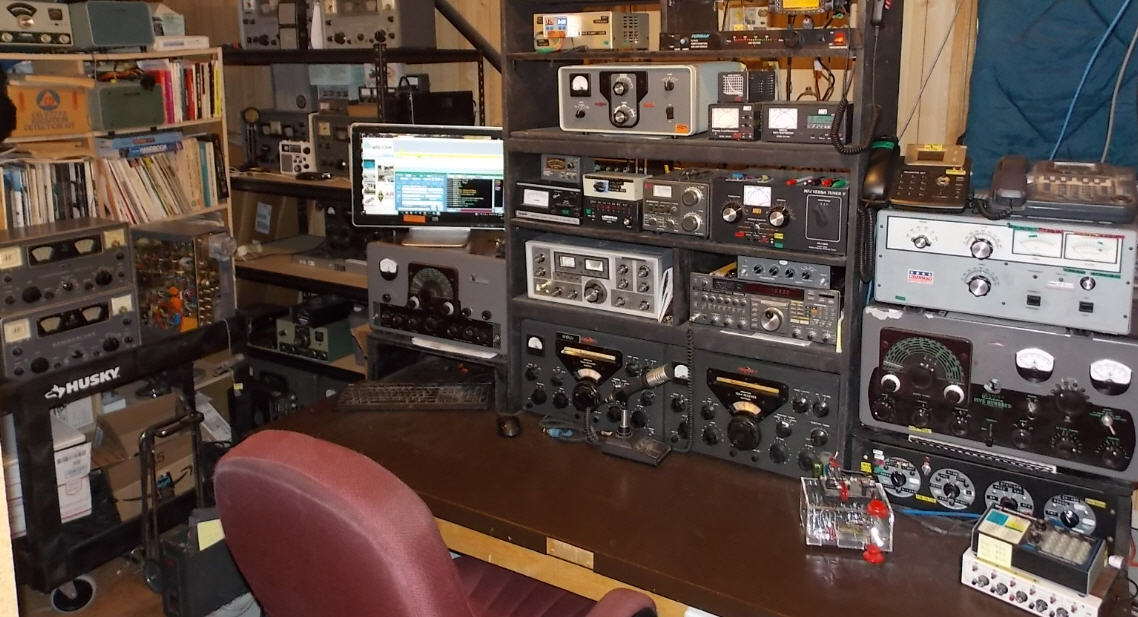
Top center shelf:
Vectronics DL-2500 (Modified 2500-watt dry dummy load),
Furman PL-Plus Series 2 Power Conditioner
Upper Middle center shelf:
(1968) COLLINS 30L-1 HF linear amplifier, MFJ-264
dry dummy load,
MFJ-267 dummy load/meter, MFJ-828 HF SWR meter
Lower Middle center shelf:
Yaesu YS-500 VHF/UHF SWR meter,
Control for HAM-IV rotator,
Switch Morse code key connections from the MFJ-486 Grandmaster II keyer to one of the older tube transmitters,
RCL-10L remote (outdoor) antenna selector switch control,
Kenwood AT-230 antenna tuner (for in-attic 80/40m dipole),
MFJ-989D antenna tuner (for outdoor antenna arrays)
Lower Center: L-R:
(1975) Yaesu FT-401b HF transceiver,
Ameco PT-3 RF preamplifier,
(1985) Yaesu FT-767gxii HF, VHF, UHF transceiver
Lower: Left-to-Right:
(1957) Johnson Viking Valiant HF transmitter
(1955) COLLINS 75a4 (paired with Viking Valiant for 40-meters),
(1955) COLLINS 75a4 (paired with Viking 500 for 80-meters),
(1958) Johnson Viking 500 HF transmitter
(1992) Command Technologies "Commander HF-2500" HF linear amplifier
Left-to-Right on the desk itself: :
Brown Brothers CTL-B double- key connected to the
AEA Morse Machine MM-3 Electronic Keyer which is connected to the FT-767gx transceiver
Vibroplex double- key connected to the MFJ-486 Grandmaster II electronic keyer connected to the vintage tube equipment
In early 2020, I started a new commitment serving with the US Air Force MARS program.
Also during the spring of 2020 Johnson Viking 500 transmitter was added to the lineup and paired with a Collins 75a4 receiver.
Below: September, 2020 main operating console at WØUI

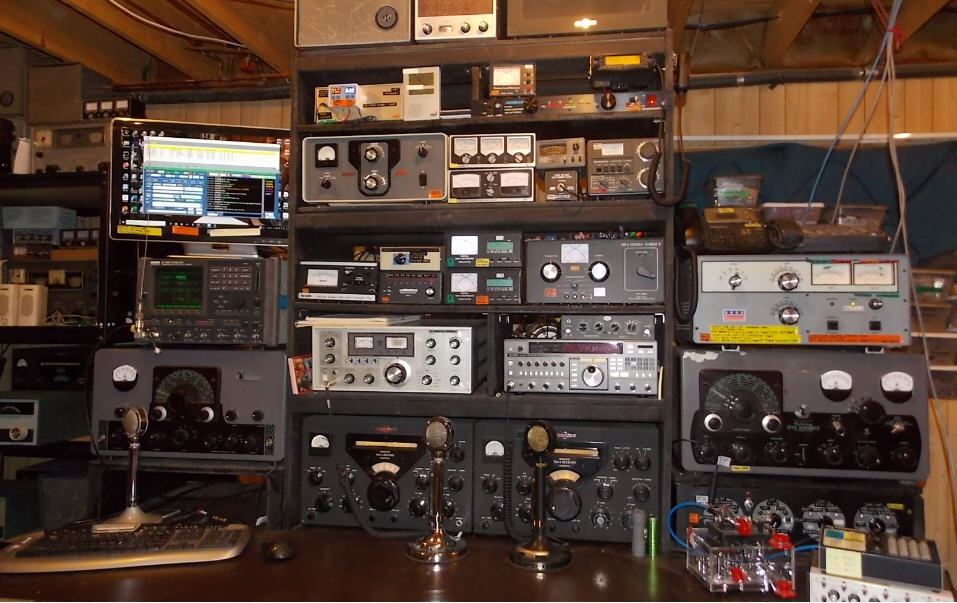
Above - September:
2020
Very top shelf
Speakers: Hammarlund S-200 speaker (feeds the left Collins
75a4 receiver),
Yaesu SP-401p speaker-patch, Collins 312a1 speaker,
Not seen: Yaesu SP-102p for FT767gxii transceiver
Top center shelf:
Vectronics DL-2500 (Heavily modified 2500-watt dry dummy load),
Furman PL-Plus Series 2 Power Conditioner,
(2018)
MFJ-267 dummy load/meter,
(2015)
Yaesu FT-8900r VHF/UHF transceiver
Upper Middle center shelf:
(1968) COLLINS 30L-1 HF linear amplifier,
(1976)
Micronta (Radio Shack) 21-522 Three-Range SWR Meter,
(1976)
Micronta (Radio Shack) 21-520a Three-Range SWR Meter, (2012)
Yaesu YS-500 VHF-UHF SWR Meter
For attic-mounted MFJ-17759 80-40-meter trap dipole:
(2016)
MFJ-264 dry dummy load and Kenwood AT-230 antenna tuner
Lower Middle center shelf:
Control for HAM-IV rotator, Switch to assign Morse code key connections from the MFJ-486 Grandmaster II keyer
over to one of the older tube transmitters,
RCL-10L remote (outdoor) antenna selector switch control,
(2014) MFJ-828 HF SWR meter
(upper=Rig output into amplifiers)
(2019) MFJ-828 HF SWR meter (RF
output from MFJ-989d tuner)
(2014)
MFJ-989D antenna tuner (for outdoor antenna arrays)
Lower Center: L-R:
(1975) Yaesu FT-401b HF transceiver,
Atop FT767gxii = (2001)
Ameco PT-3 RF preamplifier (10/01)
(1986) Yaesu FT-767gxii
HF, VHF, UHF transceiver (02/86)
Lower: Left-to-Right:
(1995)
Schlumberger-Wavtek SI-4031 Stabilock communication service monitor radio test
set,
(1957) Johnson Viking Valiant HF transmitter
(1955) COLLINS 75a4 (left - SN: 1610 12/55 paired w/ Viking Valiant),
(1958)
COLLINS 75a4 (right - SN:4623 02/58 paired w/ Viking 500),
(1958) Johnson Viking 500 HF transmitter
(1992) Command Technologies "Commander HF-2500" HF linear
amp
IP Phone used for AF-MARS operations, standard telephone
Left-to-Right on the desk itself: :
Astatic D-104 conventional microphone (wired for
Johnson XMTRs),
Astatic D-104 "Silver Eagle" microphone (wired for Yaesu
FT-401b),
Astatic D-104 "Night Eagle" microphone (wired for Yaesu
FT-767gxii)
Brown Brothers CTL-B double-key connected to the
AEA Morse Machine MM-3 Electronic Keyer which is connected to the FT-767gx transceiver
Vibroplex double-key connected to the MFJ-486 Grandmaster II electronic keyer connected to the vintage tube equipment
B&W Rotary Switches for Antenna, Dummy Load and Rig choices
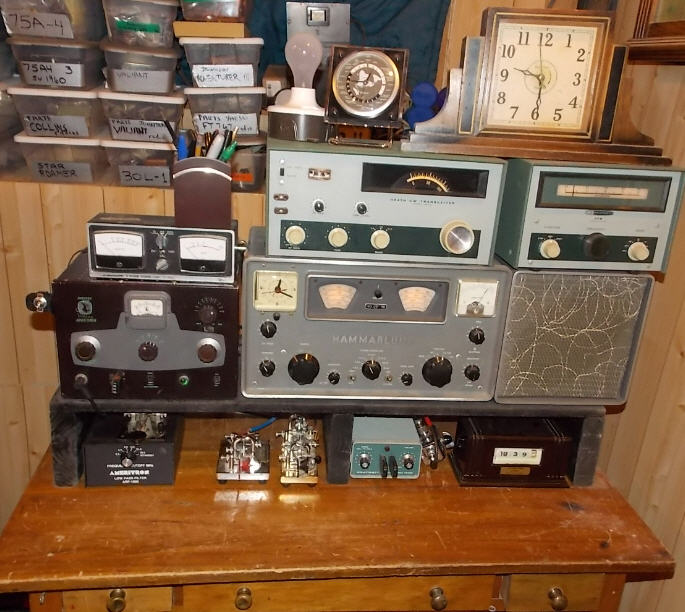
Above - September: 2020
Still all Morse code even to this day at this console
Left-to-Right Top-Row:
Home-Made incandescent 100-watt light-bulb dummy load
(1980s) Icom GC-5 World
Clock
(1932) My father's father's, Arthur, signed and dated his new clock when he was 44-years old, in June 1932
He had received it as a gift from a local gas station for being a loyal customer
Left-to-Right Upper-Row:
(1976)
Micronta (Radio Shack) 21-520a Three-Range SWR Meter
(1974) Heathkit
HW-16a Three Band CW transceiver with Heathkit HG-10b VFO
SIDEBAR: I also have a one-off HW16 that has an
"a" suffix..
I have Never seen any advertisement for nor literature about an HW-16a. Anyone
else see one of these?
Left-to-Right
Main-Row:
(1958) EF JOHNSON ADVENTURER HF transmitter
(1962) HAMMARLUND HQ-110c receiver with S-100 Speaker
Left-to-Right Desk-Level:
(2015) Ameritron
(MFJ) ARF-1000 Low-Pass Filter
J-38 Morse Code Key
(1986) Vibrokeyer
(from w8da)
(1956) Vibroplex Blue Racer bug
(1970s) Heathkit HD-1410 automatic keyer was a gift from my wife years
ago
(1965) Pennwood Numecron Tymeter 24-hour (early technology) "digital" clock with the optional 10-minute Call-ID timer.
Desk:
My father, Ralph, had made this desk in his woodshop class while attending Ann Arbor (Michigan) High School in 1937.
He had "donated" it for my shortwave listening (SWL) in 1963
and has had continual use throughout my amateur radio career to this day.
Not pictured:
(1965)
Allied Knight-Kit Star Roamer receiver (awaiting its time on the test bench)
(1930s) My mother's father's, Ken, (KIA WW2) 1930's Signal Electric lacquered brass Model R-63 hand key
Below - My "main" console:
Winter 2020-2021 - age 66 55 years a ham

Below - My "early-years" ham
console:
Winter 2020-2021 - age 66 55 years a ham
My early-years ham shack that I still use to this day.

ADDITIONAL:
CLICK ON A PICTURE TO ENLARGE IT FOR A CLOSER VIEW
VECTRONICS DL-2500 dry
high power (2500-watt) dummy load:
This is the same box as labeled and marketed by MFJ
as an Ameritron ADL-2500
It comes with an internal fan to cool the dry resistors that take your RF.
I am a fan of quiet and automation.
In my case I added (from eBay) a controller that will turn the fan on
when it gets to a programmed temperature (in my case on the right in blue where
it is set to 82-degrees F) and
turn the fan back off when things cool down to below that trigger point.
The controller also displays (on the left side in red, in this case 73.2 degrees
F) the current sensor temperature.
Working with my Command Technologies Commander HF-2500 linear after completing
this the exhaust temperature reached 161-degrees F.
I suspect that was way overheated so I left things alone to cool down.
Nice to know the temperature of the resistors. Would be curious what their rated
maximum would be. Anyone know?
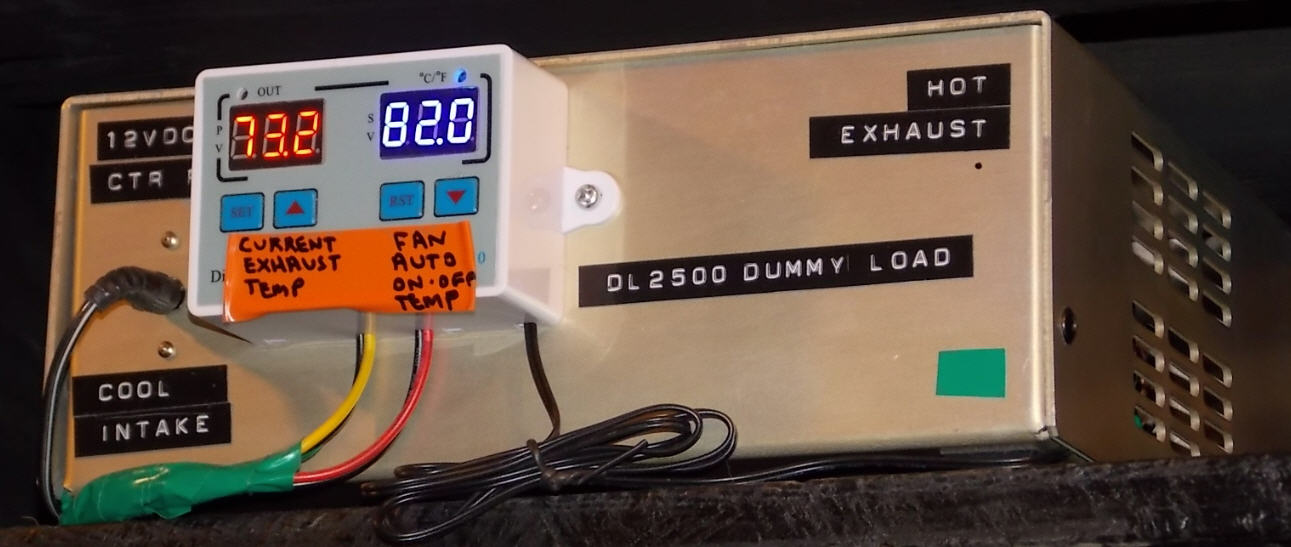
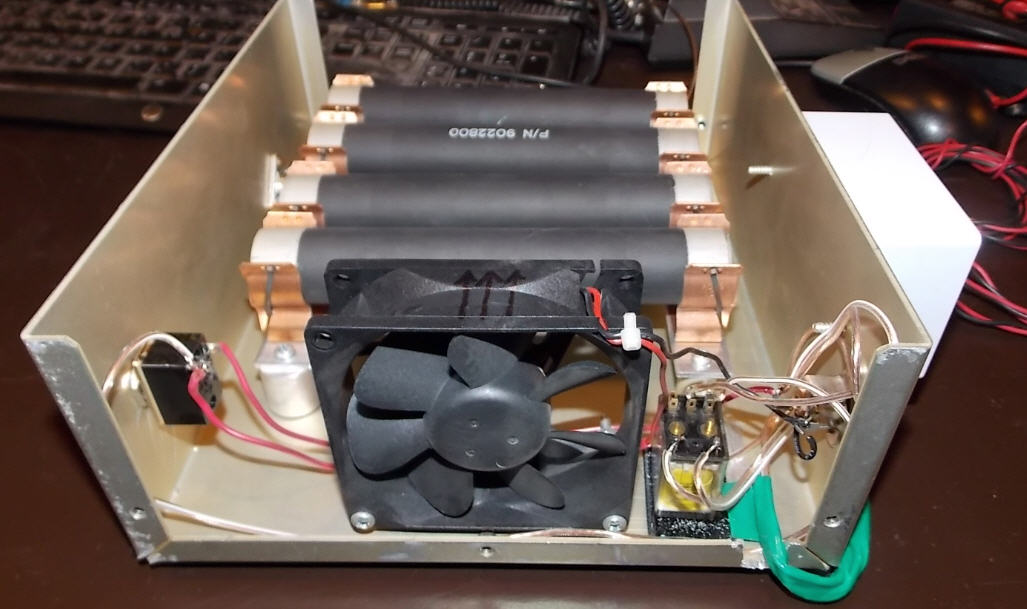
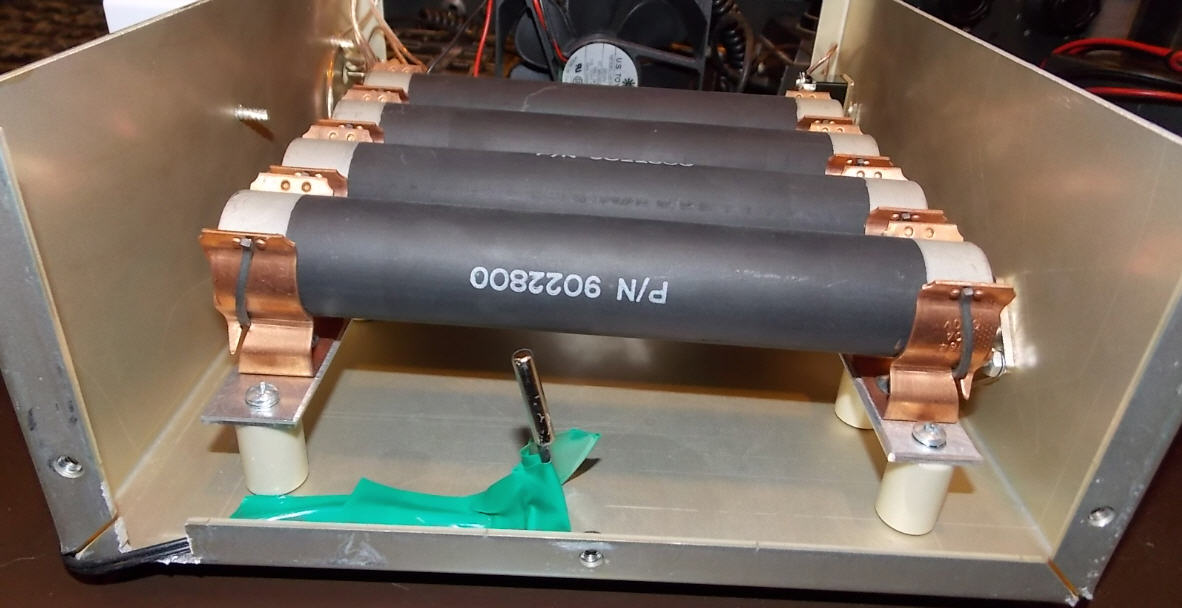
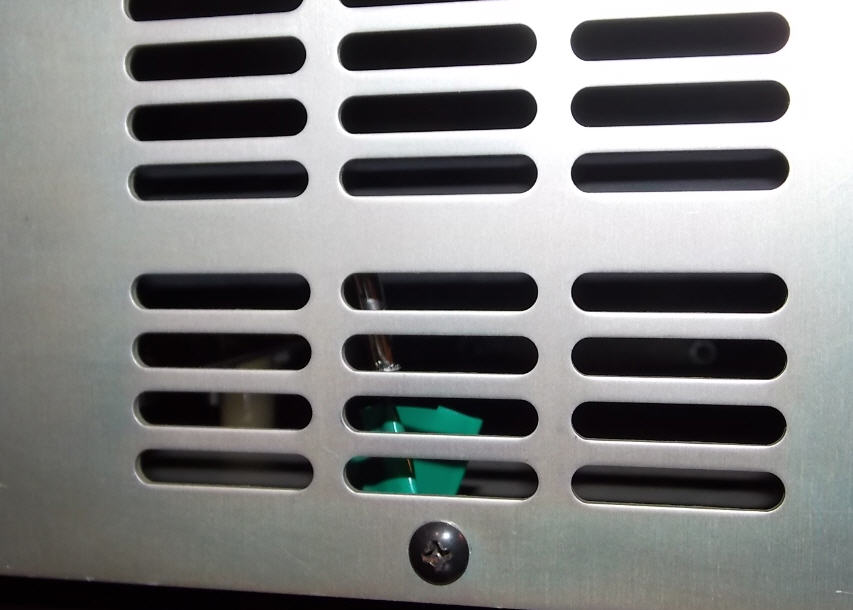
CLICK ON A PICTURE TO ENLARGE IT FOR A CLOSER VIEW
OTHER INTERESTS
Click on the Picture to make it bigger
2000 Fender American
Jazz Bass V Deluxe |
Gibson Les Paul
Lorelei Studio Custom |
1973 Gibson
Les Paul Recording |
2000 Heritage
Millennium |
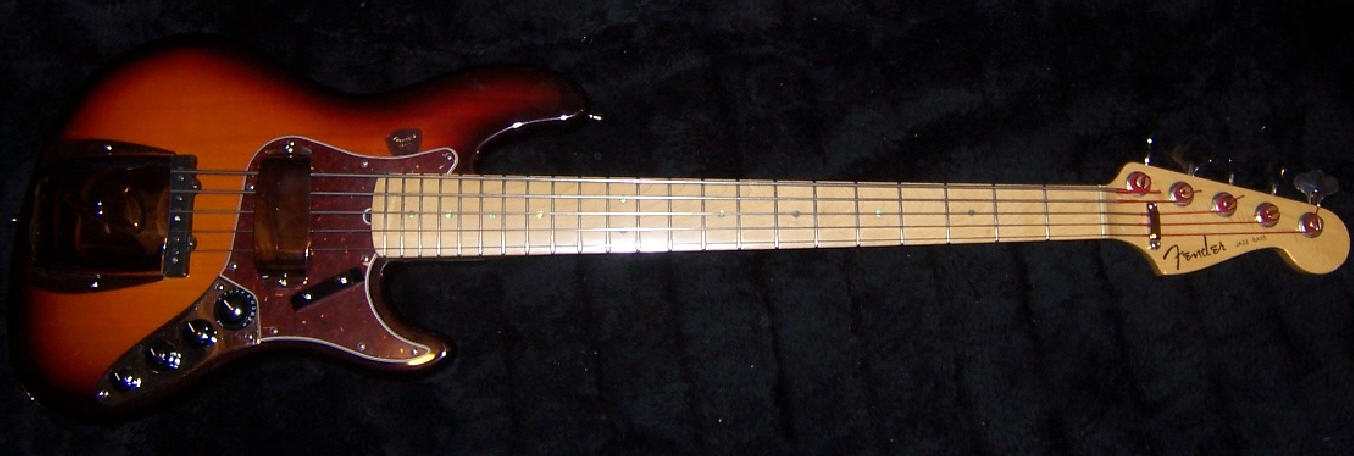 |
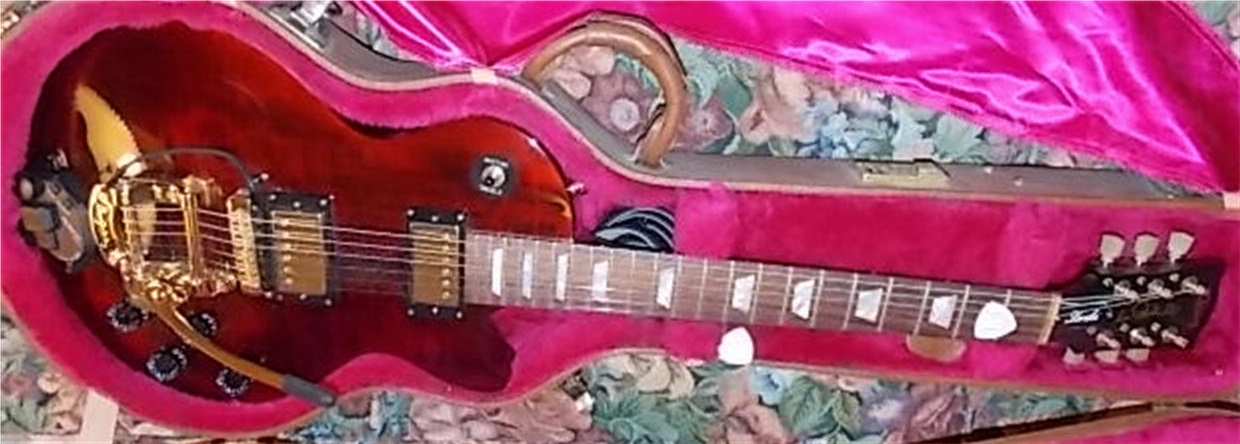 |
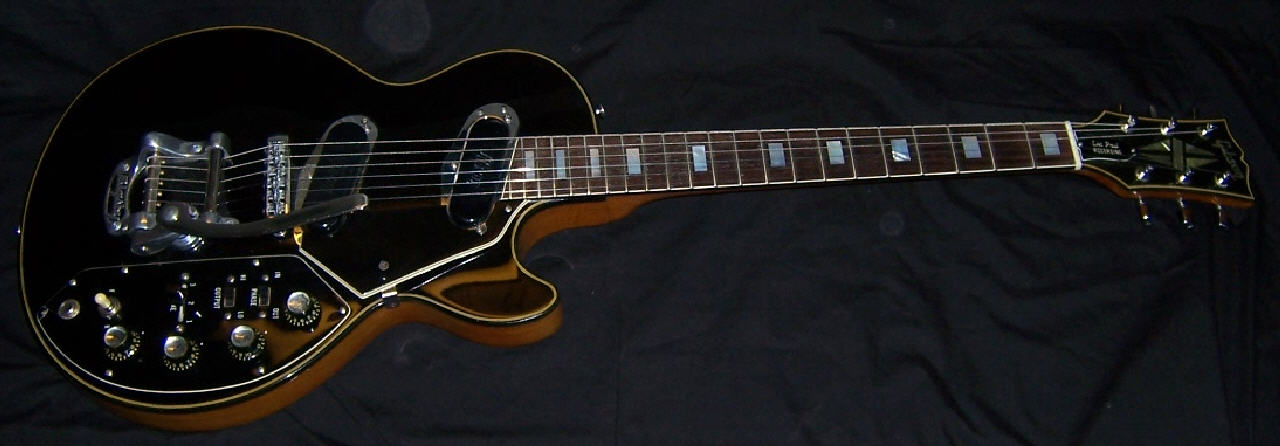 |
 |
2007 Martin
D-45 Koa |
1980 Guild
F-512 12-string |
1885
Fairbanks and Cole Banjo |
2007 Gold Tone
EBM-5 Electric Banjo |
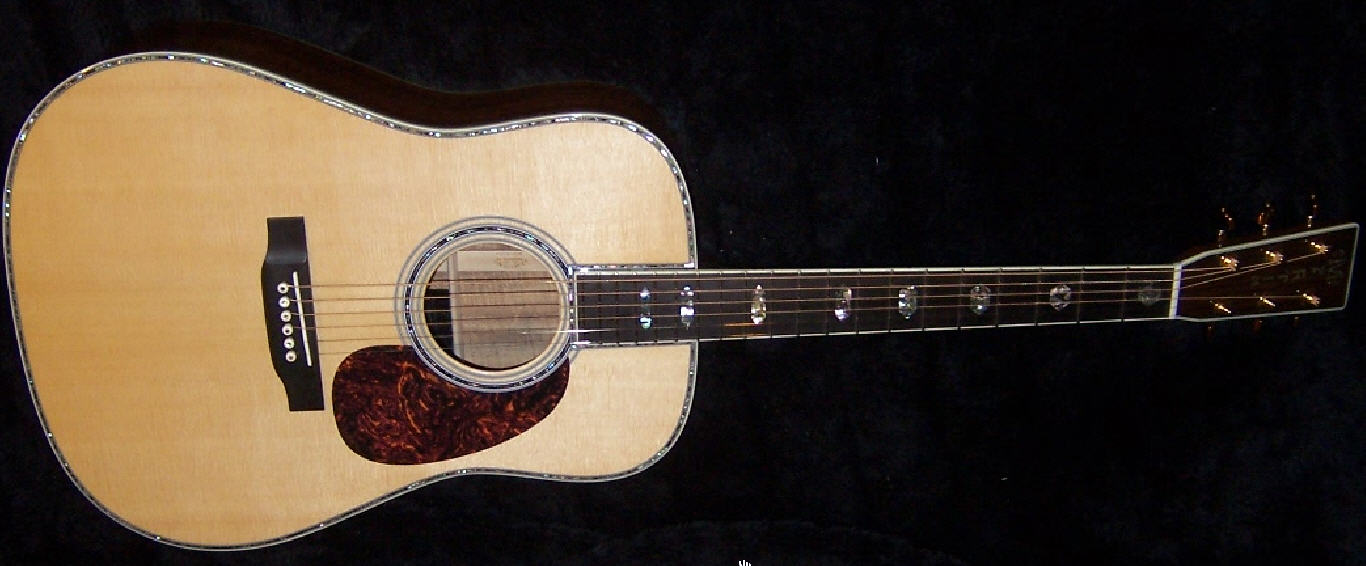 |
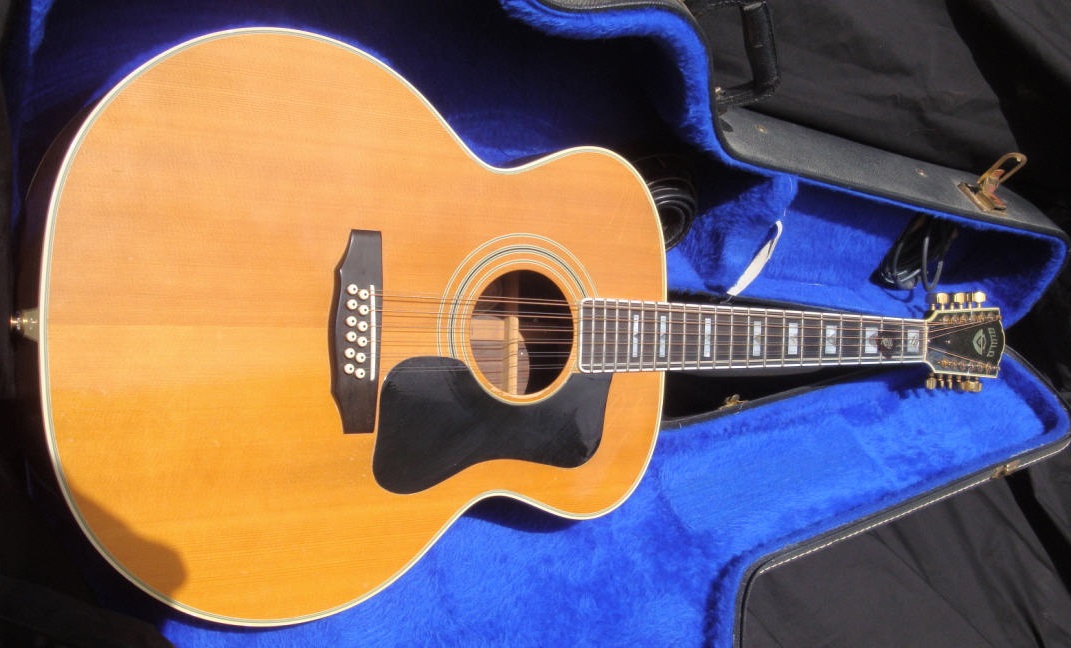 |
 |
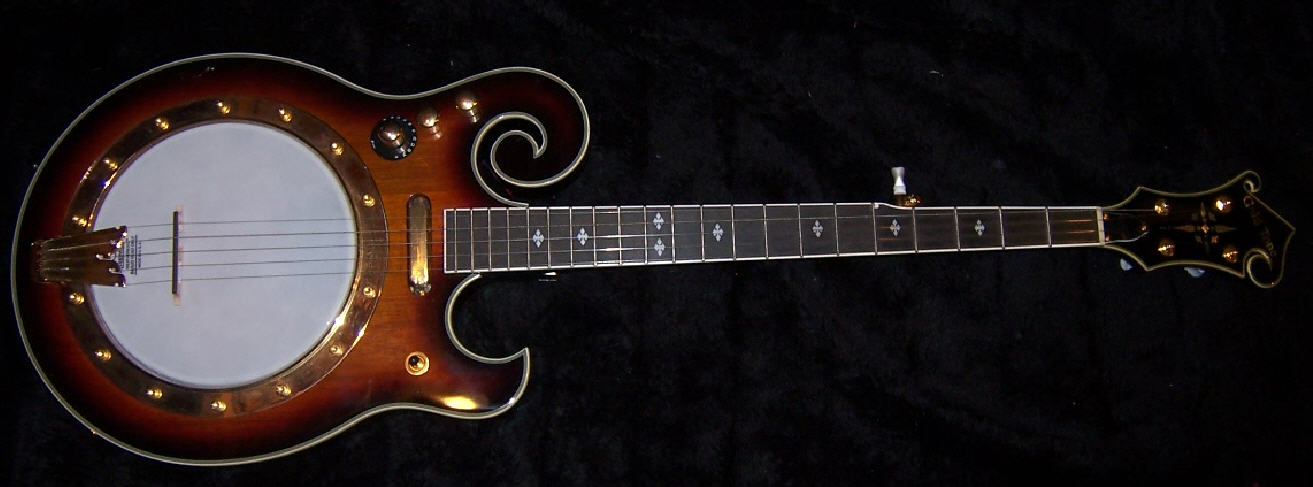 |
1983
John Deere
750 Tractor |
2002
John Deere
Gator |
2012 Henry Limited Edition rifle
In 1970 I had completed a ten-day wilderness course at the 137,000-acre Philmont Boy Scout Ranch |
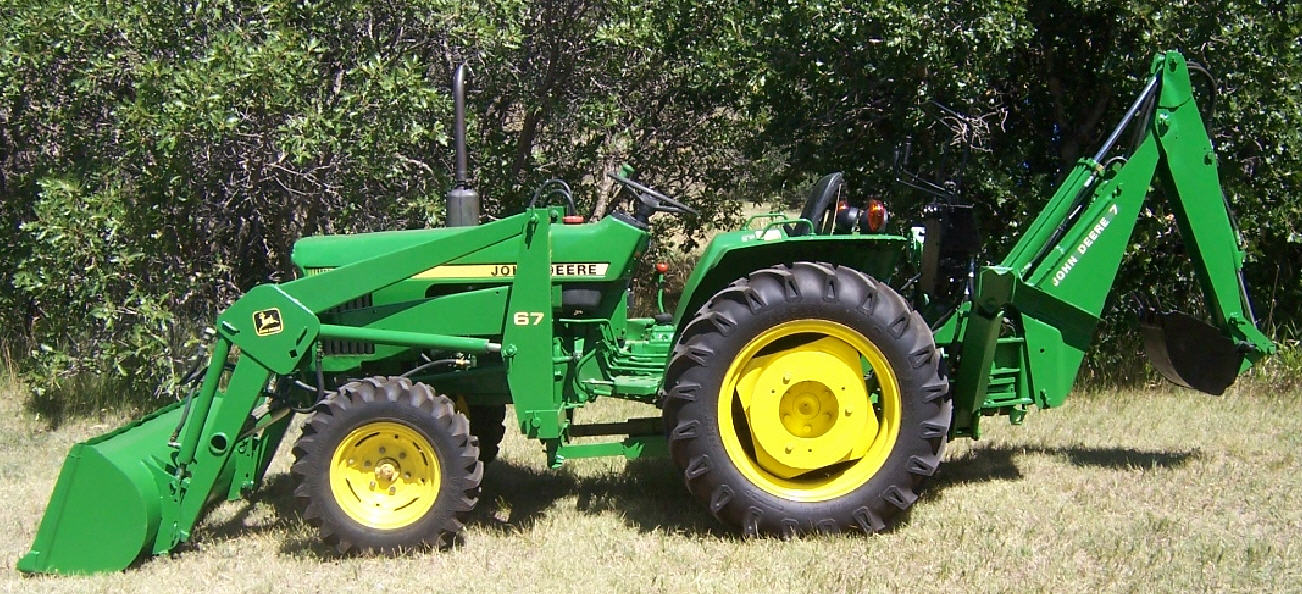 |
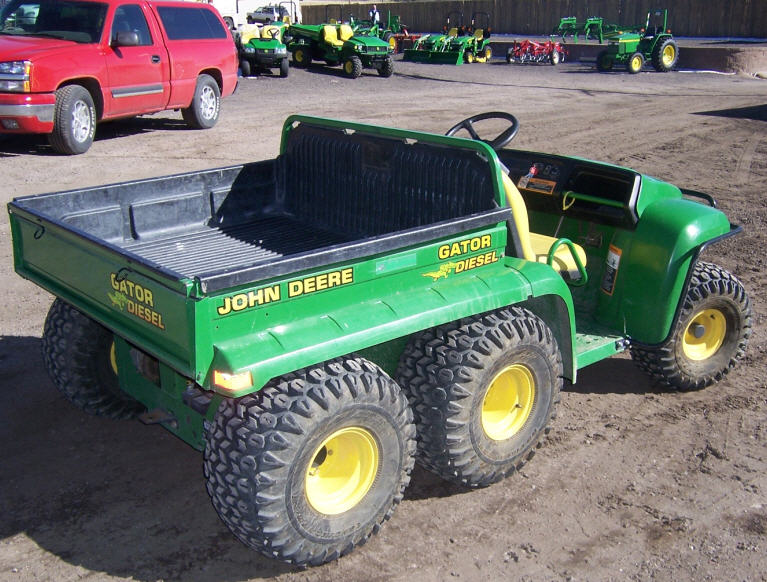 |
 |
CLICK to see the local weather conditions at Woody's QTH in Franktown, Colorado (USA)
LIFE MEMBER:
Amateur Extra Class (earned with then-required 20-wpm Morse code qualification)
FCC General (Second-Class) Radiotelephone license
Since 1966, member of ARRL Amateur Radio Emergency Services ( ARES)
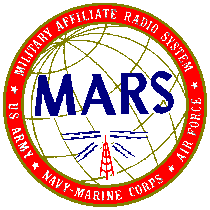 Air Force DoD Military Affiliate Radio Service (MARS) (2020- ) - AFA8RL
Air Force DoD Military Affiliate Radio Service (MARS) (2020- ) - AFA8RL
US Army DoD Military Affiliate Radio Service (MARS) (1983-2006)- AAR8KB and AAM8COE
Past President Denver Radio Club (DRC, w0tx.org)
Past NABER certified radio technician
Former ARRL Emergency Coordinator (EC) City and County of Denver
Former ARRL Volunteer Examiner (VE)
Former W5YI VE, W5YI commercial radio examiner
Former ARRL State of Colorado Official Observer Coordinator (OOC)
Former Boy Scout Assistant Scoutmaster (Alumni - Philmont Boy Scout Ranch, 1970)
Former Mile High Chapter Red Cross Communications Coordinator
Former Aircraft Owners and Pilots Association (AOPA)
Former Firefighter, (National Registry & State of Colorado) Emergency Medical Technician (EMT)
CLICK ON A PICTURE TO ENLARGE IT FOR A CLOSER VIEW
I wish you the very best
- 73:
"Woody"
w0ui@arrl.net

Above: Preparing for take-off in a Cessna 172
Below: Our two German Shepherds
Playful but aware and protective, for sure.
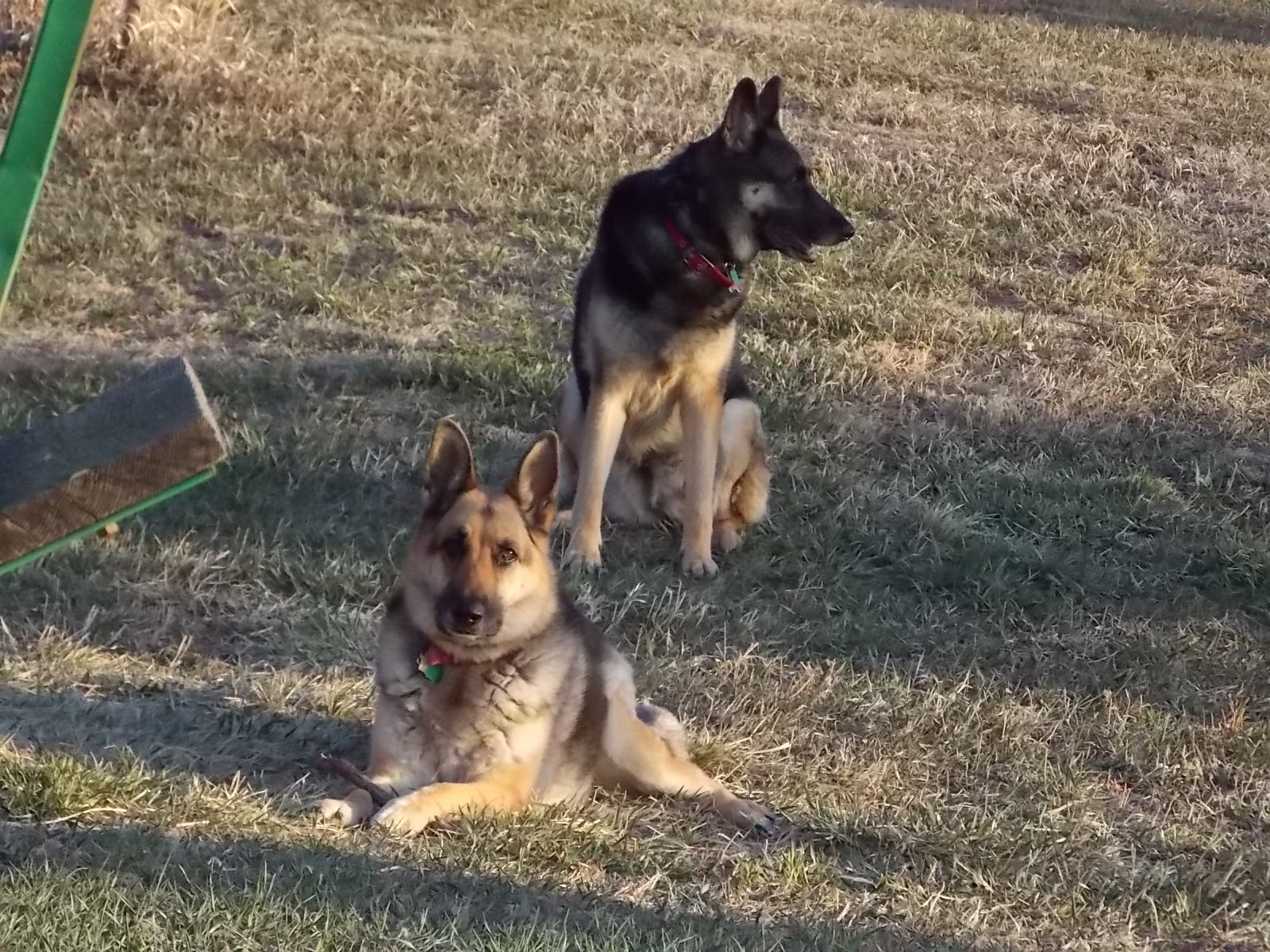 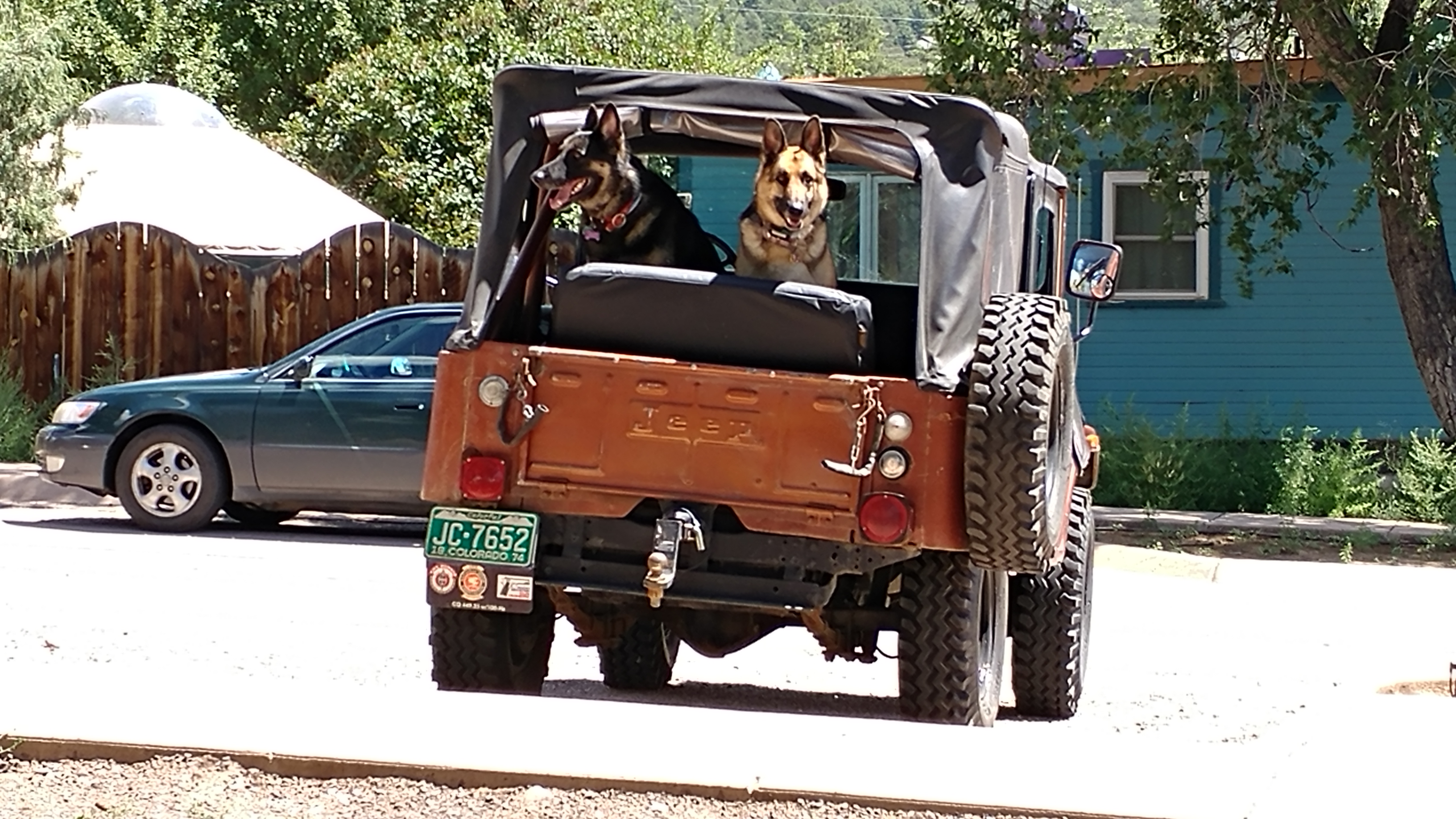
Below: 1974 Jeep CJ5 Summer and Winter!
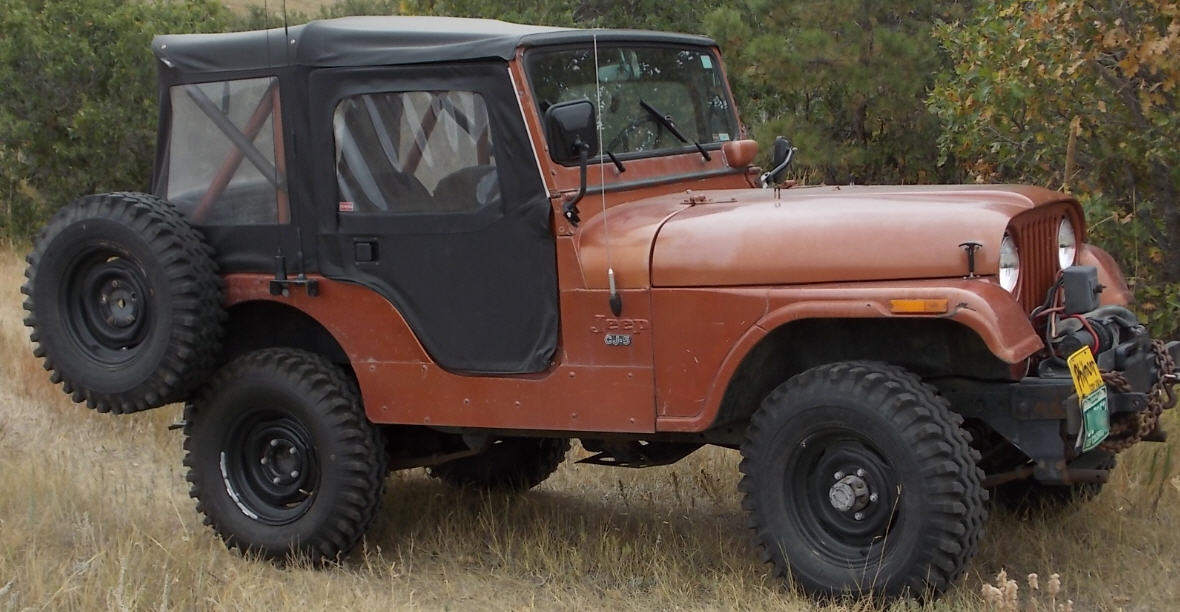

A Year 'Round Tool and Resource!
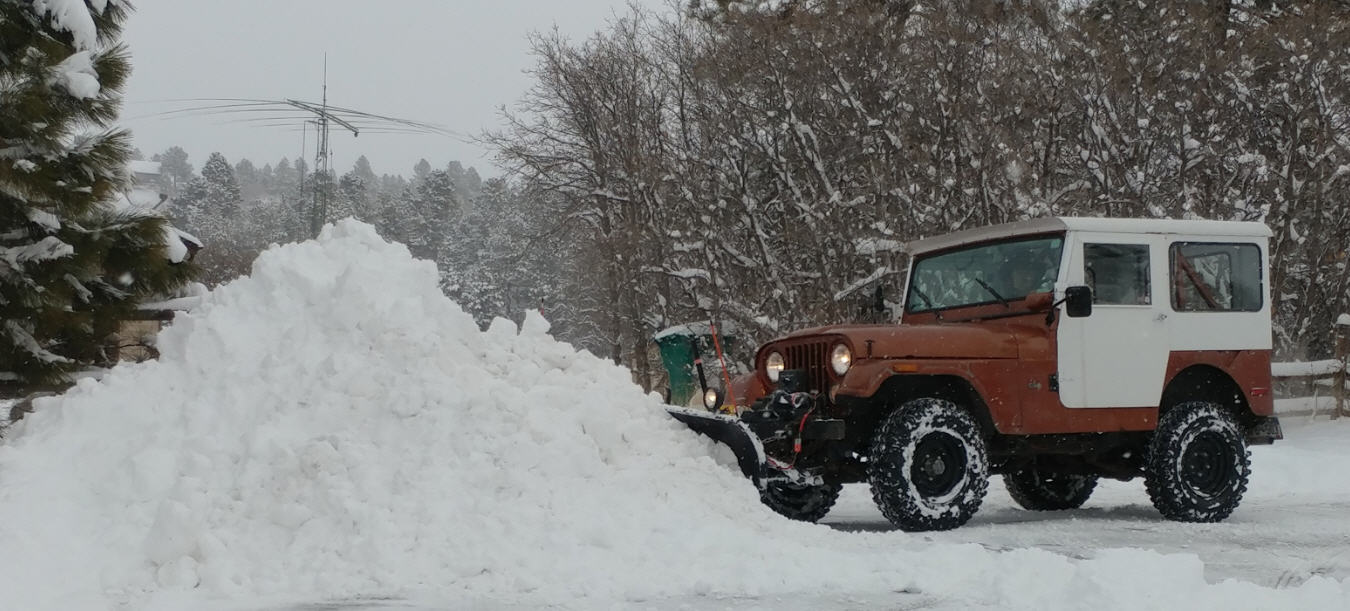
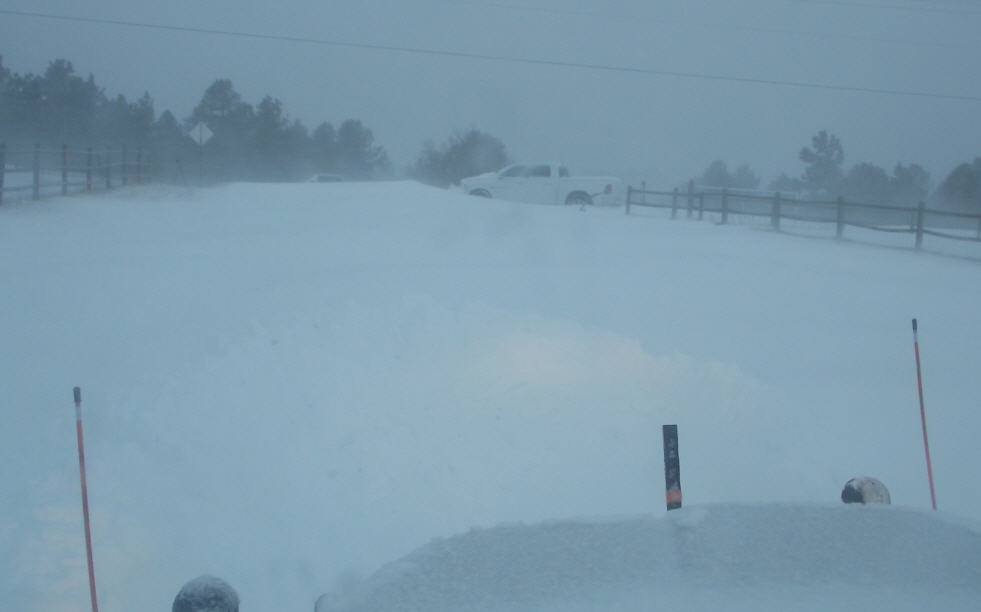
Below: A few years back!
Bassist - A little American "Country Western" and a little "Classic Rock"
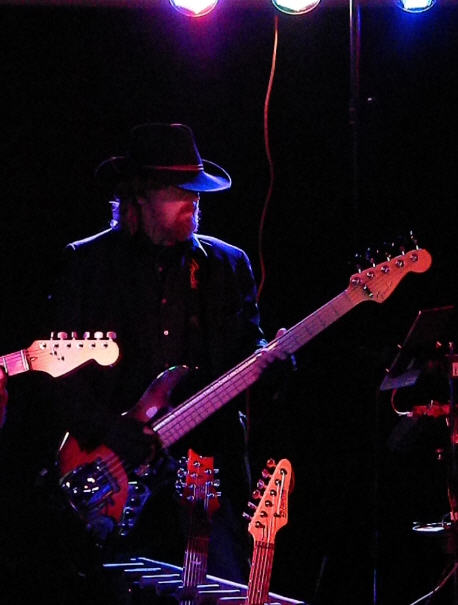 
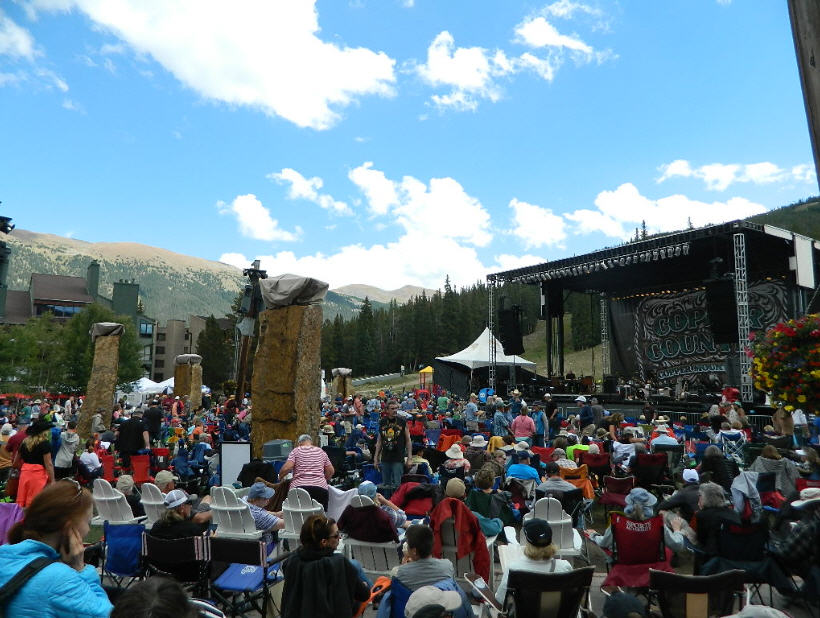
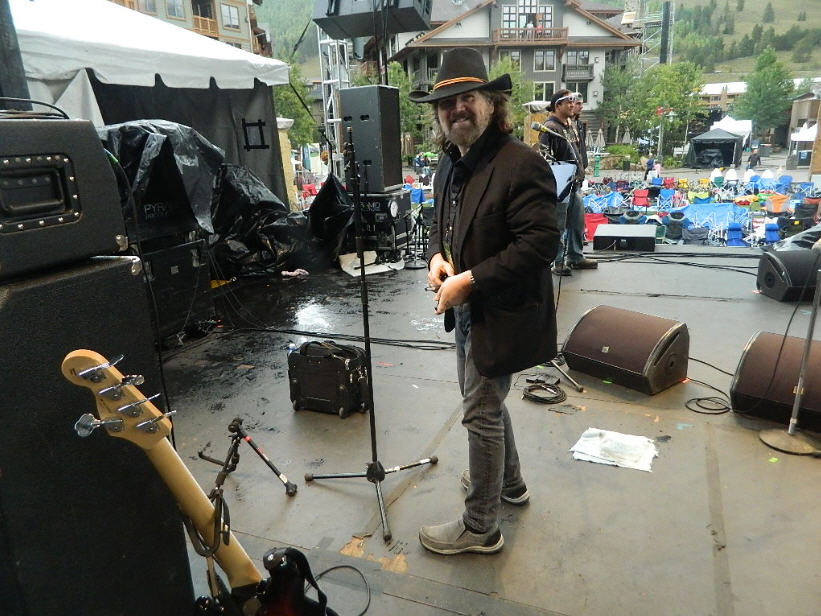 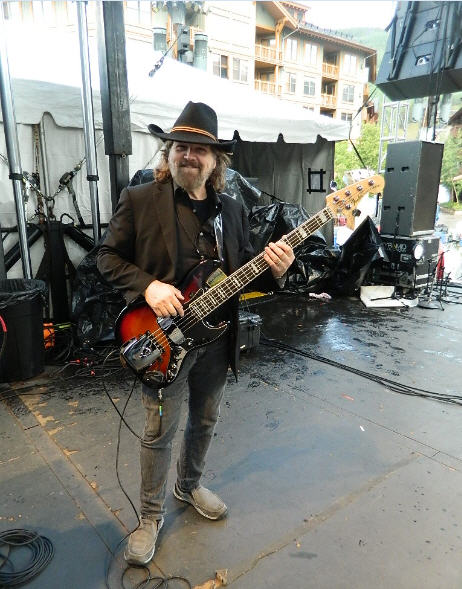
BELOW: A few years back
National Registry - Emergency Medical Technician (NREMT)

BELOW: A few years back
Managing water flow to firefighters as the Engineer at a below-zero-degree (F) house fire.


CLICK HERE FOR THE MAIN 4L RANCH WEB PAGE
IMPORTANT SIDEBAR: NIV
According to what God wrote in His Book:
IF you declare with your mouth "Jesus is Lord"
AND (if) believe in your heart that God raised Him from the dead
(THEN) you will be saved (from hell when your body dies).
- This is found in the Bible at Romans 10:9
- "So simple that even a caveman can do it!"
|
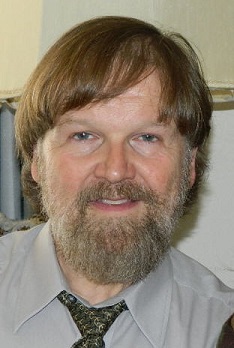



























 Air Force DoD Military Affiliate Radio Service (MARS) (2020- ) - AFA8RL
Air Force DoD Military Affiliate Radio Service (MARS) (2020- ) - AFA8RL 

























































